According provided by YONGNUO YN35mm F1.4 lens. Many thanks directly to Yongnuo.
Navigation
- In short
- History
- Alternatives
- All lenses from Yongnuo
- Main Specifications
- Assembly
- Focusing
- Firmware Upgrade
- Image quality
- Sample photos without full-frame work
- Sample photos without cropping
- Sample photos in processing
- My experience
- Video review
- Price
- Results
- User Comments
- Add your review or question on the lens
In this review, I will call the lens YONGNUO YN35mm F1.4 abbreviated Yongnuo 35 / 1.4.
In short
Yongnuo 35 / 1.4 is a fast wide-angle lens from Yongnuo for Canon cameras. Heavy, well-built, and most importantly, with decent image quality. It has a low price tag and is a very attractive solution for amateur photographers.
Main review spoiler: yes, at F / 1.4 the lens can be used. For undemanding tasks, Yongnuo 35 / 1.4 is generally a godsend.
Yongnuo 35 / 1.4 is the cheapest autofocus 35-bit with f / 1.4 for full-frame DSLR cameras (at the time of this review). Usually all lenses with a 35mm focal length with an aperture ratio of 1: 1.4 are professional solutions. Making a fast wide-angle lens for DSLR cameras is never easy.
On full-frame cameras, the Yongnuo 35 / 1.4 is a wide-angle lens with a very wide range of applications. On cropped cameras, the Yongnuo 35 / 1.4 acts as a standard lens (in terms of focal length) and its scope is also very wide.
History
Впервые on the official website of the company Yongnuo 35 / 1.4 was spotted on October 25, 2018. It went on sale around the end of November.
Before him, two more versions of the 35-current were released: Yongnuo lens 35 mm 1:2 (model YN35mm F2) for Canon cameras presented April 21 2015 years и yongnuo 35 mm 1:2 (model YN35mm F2N) for Nikon cameras presented 1 September 2016 year.
At the end of July 2019, a model appeared on the official website YONGNUO YN35mm F1.4C DF UWM.
Alternatives and price comparisons
Below I have prepared a list with all similar 35mm autofocus lenses for full-frame cameras Canon EOS:
- Canon LENS EF 35mm 1:2, 170 USD
- Canon LENS EF 35mm 1:2 IS USM, 550 USD
- Canon LENS EF 35mm 1:1.4L USM, 1200 USD
- Canon LENS EF 35mm 1:1.4L II USM, 1700 USD
- Tamron 35mm f /1.8 SP DI USD VC, 600 USD
- Tamron SP 35mm F1.4 DIUSD, 900 USD
- Sigma 35mm 1:1.4 DG HSM ART, 800 USD
- yongnuo 35mm 1: 1.4C DF UWM, 500 USD
- yongnuo Lens EF 35mm 1:2, 80 USD
If you know other autofocus full-frame lenses Canon EOS (SLR or mirrorless), with a focal length of 35 mm, please tell me in the comments. You can also add here Canon LENS RF 35 mm F1.8 MACRO IS STM, 500 USD.
And a list with all similar auto focus lenses for cropped cameras Canon EOS:
- Canon Macro Lens EF-S 35mm 1: 2.8 IS STM, 350 USD
- tokina MACRO 35 F2.8 DX AT-X PRO, 230 USD per used
- Sigma 30mm 1: 1.4 EX DC, 200 USD per used
- Sigma AF 30mm f / 1.4 EX DC HSM, 200 USD per second
- Sigma 30mm 1: 1.4 DC HSM ART, 500 USD
I indicated prices based on average current value in online stores.
The price tag for Yongnuo 35 / 1.4 is about 350 dollars.
In fact, autofocus Yongnuo 35 / 1.4 comes at the price of a manual Samyang 35mm 1: 1.4 AF UMC (And its modifications).
All Yongnuo Lenses
Bayonet mount Sony FE [DF, FULL FRAME] и Sony E[DA,APS-C]:
- yongnuo 11 mm 1:1.8 DA DSM WL S [announcement]
- yongnuo 16 mm 1:1.8 DA DSM S [announcement]
- yongnuo 35 mm 1: 2 DF DSM S [review]
- yongnuo 50 mm 1: 1.8 DF DSM S [announce]
- yongnuo 50 mm 1:1.8 DA DSM S [overview]
- yongnuo 85 mm 1: 1.8 DF DSM S [review]
- yongnuo 85 mm 1:1.8 DF DSM S II [announcement]
Bayonet mount Canon RF (mirrorless full frame):
- yongnuo 35 mm 1: 2 DF DSM R [review]
- yongnuo 35 mm 1:2 CR [announcement]
- yongnuo 50 mm 1:1.8 DF DSM R [to be announced]
- yongnuo 85 mm 1:1.8 DF DSM R (two subversions with different names) [review]
Bayonet mount Nikon Z [DF, FULL FRAME + DA,APS-C]::
- yongnuo 11 mm 1:1.8 DA DSM WL Z [announcement]
- yongnuo 35 mm 1:2 DF DSM Z [announcement]
- yongnuo 50 mm 1:1.8 DF DSM Z [announcement]
- yongnuo 50 mm 1:1.8 DA DSM Z [review]
- yongnuo 85 mm 1:1.8 DF DSM Z [announcement]
Bayonet mount fujifilm x [DA,APS-C]:
- yongnuo 11 mm 1:1.8 DA DSM WL X [announcement]
- yongnuo 50 mm 1:1.8 DA DSM X Pro [Announcement]
- yongnuo 50 mm 1:1.8 DA DSM X [announcement + overview]
For the system Micro 4 / 3:
- yongnuo 25 mm 1: 1.7 [review]
- yongnuo 42.5 mm 1: 1.7 [review]
- yongnuo 42.5 mm 1:1.7 II [overview]
- yongnuo 12-35 mm 1:2.8-4 STM ASPH MACRO [announcement]
Bayonet mount Nikon f (mirrored full frame):
- yongnuo 14 mm 1: 2.8 [overview]
- yongnuo 35 mm 1: 2 [overview]
- yongnuo 40 mm 1: 2.8 [overview]
- yongnuo 50 mm 1: 1.8 [review]
- yongnuo 50 mm 1: 1.4 E [overview]
- yongnuo 60 mm 1:2 MACRO MF [overview]
- yongnuo 85 mm 1: 1.8 [overview]
- yongnuo 100 mm 1: 2 [overview]
Bayonet mount Canon EF (mirrored full frame):
- yongnuo 14 mm 1:2.8 [review N]
- yongnuo 35 mm 1: 2 [review]
- yongnuo 35 mm 1: 1.4 [overview]
- yongnuo 35 mm 1: 1.4C DF UWM [announce]
- yongnuo 50 mm 1: 1.8 [overview]
- yongnuo 50 mm 1:1.8 II [overview]
- yongnuo 50 mm 1: 1.4 [overview]
- yongnuo 60 mm 1:2 MACRO MF [review N]
- yongnuo 85 mm 1: 1.8 [review]
- yongnuo 100 mm 1: 2 [overview]
Cameras:
- Yongnuo YN433 (2023, Micro 4/3, 20 MP, 4K)
- Yongnuo YN455 (2021, Micro 4/3, 20 MP, 4K)
- Yongnuo YN450/450M (2019, Micro 4/3 -> Canon EF, 16 MP, 4K)
Lenses and cameras and many other products from Yongnuo can easily be found at Authorized Yongnuo Dealer / Store on Aliexpres.
My video on all Yongnuo lenses here.
Main technical characteristics of YONGNUO YN35mm F1.4
| Review Instance Name | Body: YONGNUO Digital 35mm YN35mm F1.4. From the bayonet side, the serial number is F5000021. Box: YOUNGNUO DIGITAL wide-angle prime lens YN35mm F1.4 |
| Basic properties |
|
| Front Filter Diameter | 67 mm, metal thread for filters |
| Focal length | 35 mm
|
| Zoom ratio | 1 X (this is a fixed lens, it does not have a zoom) |
| Designed by | for full-format digital cameras. The lens is suitable for everyone. Canon EOS cameras |
| Number of aperture blades | 7 rounded petals |
| Tags | bayonet mount mark, hood mount mark, window with a scale of focusing distances in meters and feet, DOF scale (only for F / 22) |
| Diaphragm | F / 1.4 to F / 22 |
| MDF | 0.35 m, maximum magnification factor 0.15 x (1: 6.67) |
| The weight | 810 g (according to instructions)
According to my measurements:
|
| Optical design | 11 elements in 9 groups.
The lens uses aspherical elements (shown in blue) and low dispersion elements (shown in blue) |
| Lens hood | Bayonet mount metal hood LH-73T YONGNUO MADE IN CHINA. The hood is supplied, can be installed in the opposite direction |
| Manufacturer country | Made in China, although the country of manufacture is not indicated on the lens itself |
| Period | From 25 October 2018 |
| Instructions | View my scan (English only) |
| Price | Prices for Aliexpress from a trusted seller |
Most likely the optical design of the Yongnuo 35 / 1.4 belongs to some old and unreleased Nikon / Canon / 'any other system' lens that did not reach mass production. If someone visually found a similarity with the optical design of some lens, please, unsubscribe in the comments.
Assembly
The lens came to the review completely new.
In a small box is a warranty card, instructions in Chinese and English, a card with a manufacturing date of 15-10-2018, a desiccant and the lens itself with a front (Yongnuo LC-67) and a back cover. The covers are made of thick plastic. The front and rear lenses of the lens are initially covered with special transport films of blue color.
In general, the lens is well assembled. Yongnuo 35 / 1.4 has metal mount mount. The focus ring is very wide and rubberized, tactilely pleasant. The main body is made of metal. The thread for the filters is also metal. It is stated that the contacts of the microprocessor are gold-plated.
The weight of the Yongnuo 35 / 1.4 lens itself is 810 grams and more than 900 grams with protective caps and hood. In the hands, the lens feels like a solid thing. The lens weighs more than the TOP original Canon 35 / 1.4L II.
The design of the Yongnuo 35 / 1.4 is reminiscent of other similar modern lenses such as Canon 35 / 1.4L II or Sigma 35 / 1.4 ART. The red ring looks and feels - metal, shimmers with light as if it is chromed. In photographs, the ring seems to be just a colored strip, but in a lively visual perception of the ring has a slightly different effect. Perhaps this ring should refer to Canon L-series professional lenses, for example Canon 35 / 1.4L II.
Diaphragm consists of 7 petals and form a hole in the shape of a regular heptagon, while in the photographs in the blur zone rather round discs of blur appear in the range F / 1.4-F / 2.2.
The lens has a USB port in the lower rear of the lens (in the bayonet area). The port serves to update the firmware (described in detail about this in the relevant chapter) The USB port does not have a rubber plug.
The package comes with excellent metal hood labeled LH-73T. The hood is made of thick metal, very pleasant to the touch. The hood fits into special slots near the front lens of the objective (bayonet type hood), it can also be installed in the opposite direction for transportation. There are white dots for installation. The hood fits nicely and very securely. I was surprised that the manufacturer spared no expense in creating such a hood and included it in the package, especially considering the fact that all other Yongnuo lenses that I reviewed before the Yongnuo 35 / 1.4 came without a hood initially.
Due to the fact that the hood and part of the body are metal, during shooting in cold weather in the open air, the fingers of my left hand constantly froze, with which I usually support the lens from below, mainly behind the hood.
The Yongnuo 35 / 1.4 does not have a rubber mount and is not an all-weather lens.
Focusing
For focusing, Yongnuo 35 / 1.4 uses micro motor and is an analog of Canon MM (Micro Motor). Auto focus will work with any SLR camera Canon EOS. Most likely, mirrorless cameras with an appropriate adapter should not have any special problems.
Focus speed average (closer to low), significantly lower than the original lens Canon 35 / 1.4L II.
At a photo shoot with a moving child in the open air, 2/3 of the pictures were with focusing errors due to insufficient focusing speed. UPDATED: this problem was cured in a modernized model Yongnuo 35mm 1: 1.4C DF UWM
Auto focus noisybut the noise level is much lower than that of Yongnuo 50 / 1.4. When shooting a video using auto focus and a microphone built into the camera, noise will be heard on the video. UPDATED: the noise was healed in the modernized model Yongnuo 35mm 1: 1.4C DF UWM
I worked with the lens on the camera Canon EOS 5D с simple 9-point focusing system. Focusing tenacity is low. Focusing errors are unsystematic and are often associated with low depth of field at F / 1.4.
At leisurely street and studio photo shoots using Canon EOS 5D about a third of the shots had obvious focus errors. On unhurried reports from the baptism of a child, weddings and weddings, more than a third of the images were with obvious focus errors. When shooting stationary objects (architecture, landscape), there were practically no focusing errors.
UPDATED
On camera Canon EOS 750D (aka Canon Digital Rebel T6i, aka Canon Kiss Digital X8i) from 19-point advanced focusing system and the Hybrid CMOS AF III system for focusing in Live View, the tenacity of the focus is significantly better than that of Canon EOS 5Dbut still there are more focus errors than you might expect. Focusing errors are unsystematic, but spoil the impression of the lens.
On camera Canon EOS 750D I checked the presence of the back and focus front at different focusing distances (infinity and MDF as well). The shots taken using the Live View mode (which theoretically does not suffer from back / front focus) were used as a measure. Focusing accuracy using phase focusing sensors, both central and side, completely coincided with the Live View mode (several series of shots were taken, the best result was chosen). On camera Canon EOS 750D all focus modes in Live View work well, including focus with automatic face detection.
Focusing ring rubberized, wide, in manual focus mode rotates approximately 135 degrees (3/8 of a full 360 degree revolution). When the extreme positions are reached, the ring does not rest, but continues to rotate slowly. It is convenient to aim manually. During manual focusing, a small annoying sound is heard as 'plastic rubbing against plastic or metal', while the ring rotates smoothly and quite pleasantly. During focus direction change, there is small lag (delay), but it does not cause much discomfort.
There is a 'AF-MF' (auto focus / manual focus) mode switch on the lens body. During auto focus focus ring remains stationarywhile it can be freely rotated 360 degrees without any effect on focusing. Unfortunately, unlike many original Canon lenses, Yongnuo 35 / 1.4 does not support Canon FTM (or similar) manual focus control.
Lens has internal focus, the front lens remains stationary during focusing. Focusing occurs due to the movement of the rear lens group, the effect of dust suction by this movement is minimal. You can use different kinds of filters without any problems.
The minimum focusing distance is 35 cm, while the maximum magnification for macro photography of 1: 6.67 can be obtained.
The lens has a window with a distance scale with marks in meters and feet. The scale is small, on it there are marks for 2, 1, 0.6, 0.4, 0.35 meters and a label of 'infinity'. There is also a label with the depth of field scale, but only for the value of F / 22. There is no tag for working in the infrared spectrum.
Other focusing features:
- on the distance scale, the focus ring has a slight 'overrun for infinity'. Yongnuo 35 / 1.4 does not have a hard stop (hard infinity mechanical stop) which allows you to accurately and quickly focus the lens at infinity under any external temperature conditions. For accurate aiming at infinity, you cannot just bring the focus ring to its extreme position.
- Focus shift (shift-focus) is missing.
- Yongnuo 35 / 1.4 has a small 'Focus Breathing' effect (changing the viewing angle during focusing). During focusing towards the MDF, the viewing angle decreases.
- The lens sometimes continues to focus for a short time after the focus activation button has been depressed (usually by half-pressing the shutter button). This happens if the lens is not focused accurately enough (the lens somehow continues to focus when the focus button has already been released). Not everyone will notice this feature and it does not particularly interfere with comfortable work with the lens.
- Teleconverter compatibility unknown
- Adapter compatibility unknown Canon mount adapter EF-EOS M for using optics with a bayonet mount Canon EF/Ef-s on cameras with a bayonet mount Canon EOS M
- Unknown compatibility with Canon Mount Adapters EF-EOS R for use with mount optics Canon EF/Ef-s on cameras with a bayonet mount Canon EOS RF
- Most likely, some cameras will have to fine tune the focus to avoid back / front focus
Important: Yongnuo 35 / 1.4 - a lens from a third-party manufacturer. It may happen that it will not work correctly with some Canon cameras.
USB firmware update
On the lens housing Yongnuo 35 / 1.4 there is a USB port with which you can update the lens software (firmware / firmware). Unfortunately, the functionality of the YNLensTool Updater Version 1.00 program, which is responsible for working with the lens, is very meager. You can only see the current firmware version and update it to a new one. Firmware versions can usually be found on the official website, but firmware for Yongnuo 35 / 1.4 has not yet been released (at the time of creation of the review).
A widespread USB 2.0 MICRO-B port (regular Micro-USB, like many mobile phones) is used for connecting to the lens. A USB cable is not included. To connect, I used a USB cable for my old android phone. My lens had basic firmware V1.01.
A firmware update, most likely, allows you to improve the compatibility of the lens with new cameras, improve the autofocus, eliminates some other errors. I appreciated the usefulness of this function when working with the lens Yongnuo 100mm 1: 2 for Nikon cameras. But still it’s very bad that there is no way to roll back (restore) the original firmware that came out of the box.
To upgrade the firmware (software) of the lens:
- Turn off the camera, detach the lens
- Open program YNLens Updater for updating (program for Window or MacOs can be downloaded on the official website here)
- Attach the lens to the computer using a USB cable. If everything went well, the program will automatically detect the connected lens
- Click [Browse] and select the file with the desired firmware
- Click [Start] to start the update. Wait for the update to finish
- Disconnect the cable, attach the lens to the camera and start shooting
Image quality
As for an inexpensive lens, the Yongnuo 35 / 1.4 shows quite acceptable image quality.
Sharpness
- in the center of the frame at F / 1.4, the lens shows acceptable sharpness
- there is a noticeable drop in sharpness to the edges of the frame at f / 1.4
- great resolution in the center of the frame on covered apertures after F / 2
- resolution at the edges of the frame returns to normal on covered apertures after F / 4
- high contrast
It is difficult for the lens to show a high-quality result at F / 1.4 on a 24MP cropped camera, but after F / 1.8 everything gets much better.
Distortion
- barrel-shaped distortion
- the overall level of distortion is at a level typical for such lenses
- the nature of the distortion is complex, it will be a little difficult to correct in the editor
Vignetting
- noticeable vignetting is strongest at F / 1.4-F / 2
- vignetting decreases with focus towards the MDF. Most noticeable when focusing at infinity
- on APS-C cameras, vignetting practically disappears at F / 2.0-F / 2.8
- vignetting is easily fixable in the editor
Aberration
- open diaphragms have a moderate amount of chromatic aberration
- the strongest chromatic aberration visible at the edges and corners of the image
- general level HA is at the level typical for high-quality similar lenses
- there is moderate friging (HA in the blur zone)
- I did not notice blooming in any of the pictures
Rest
- on covered diaphragms you can achieve a beautiful effect of a 14-ray star
- the lens is good, and sometimes very well tolerates backlight. In rare cases, you can get a looped arc from a bright light source
- lateral contrast may be noticeably lost, the hood partially eliminates the problem
- diaphragm forms fairly smooth discs of blur only in the range of F / 1.4-F / 2.2, at values of F / 2.2-F / 22 you can clearly trace the regular polygons from point light sources in the blur zone
- color rendering is neutral, pleasant
- the bokeh is fairly flat, but the discs of confusion have concentric onion circles (only from bright light sources), and the discs of confusion have roughness
Important: at the time of the creation of this review, there was no Yongnuo 35 / 1.4 profile for popular RAW converters. But I noticed that for Yongnuo 50 / 1.8 lenses under Nikon / Canon, as well as for Yongnuo 35 / 2.0 under Canon, lens profiles for the latest versions of Adobe Camera Raw and Adobe Lightroom have already appeared, therefore, most likely, the appearance of a lens profile for Yongnuo 35 /1.4 is only a matter of time.
If you use a 35 / 1.4 lens in full frame, then to achieve the same image on a camera with an APS-C sensor with Kf = 1.6x (on Canon EOS cropped cameras), you need to use a lens with a focal length of about 22 mm and a relative aperture of 1: 0.93. But, as you know, such lenses, especially with autofocus, have not yet been released. Thoughts on this subject are stated here.
Full frame sample photos
All sample photos in the gallery below were shot using a camera Canon EOS 5D and the Yongnuo 35 / 1.4 lens. Photos taken using RAW ('.CR2') file conversion with Canon original utility Digital Photo Pprofessional 4 (Canon DPP) without any changes (without treatment), or immediately in camera JPEG. All photographs were taken using a lens hood and without using filters.
'JPEG' source photos can be download from this link (more than 200 different photos, 1.4 GB). RAW source photos ('.CR2') can be downloaded at this link.
UPDATED. More photos on Canon EOS 5D.
UPDATE Sample photos on crop
All sample photos in the gallery below were shot using a camera Canon EOS 750D (aka Canon Digital Rebel T6i, aka Canon Kiss Digital X8i) and a Yongnuo 35 / 1.4 lens without a hood. Photos taken using RAW ('.CR2') file conversion with Canon original utility Digital Photo Pprofessional 4 (Canon DPP) During the shooting, I did not notice that I used everywhere white balance 'flash', and some of the photos were taken with the aspect ratio of 16: 9, so I had to tweak the RAW a little to get an acceptable picture.
Let me remind you that the pixel density of Canon EOS 750D 20% higher than fifty megapixel Canon EOS 5Dsr/Canon EOS 5DS.
Original RAW ('.CR2') photos can be download from this link.
Photos in reduced size galleries, resize up to 2048 X 1535 pixels (about 3.1 MP) were made using the free software FastStone Photo Resizer 3.1. Data was imprinted at the bottom of the photos. EXIF (excerpt, diaphragm, ISO). When reducing the size of photos, I use the quality of 70-80% of the original. This percentage of quality is more than enough to transfer all the details in the photo without overweight in the 'JPEG'. With 3 MP, you can print photos up to A4 without any problems. The light weight of the photos allows you to quickly view sample photos for general acquaintance with the capabilities of the lens and allows you to save photo loading time and disk space on my site. When viewing photos on the display of different devices, the site automatically adjusts the photos to the size of the device used. To view a 1: 1 photo pixel by pixel, just open it in a new browser tab, do it as easy as clicking on the photo thumbnail with the middle mouse button (by scrolling) or using the 'open link in a new tab / window' context menu.
Sample photos in processing
Photos in small processing can look in my gallery on the service 500Px and a couple more with me on the site here.
My experience
I shot about 35 (updated) shots on Yongnuo 1.4 / 25.000 in a wide variety of settings, from wedding photography to architecture photography. During all this time, no emergency situations with him were noticed. However, doing a little bit of reportage shooting with the Yongnuo 35 / 1.4 seemed to me a difficult task due to the insufficient focusing speed. At the same time, a lot of good material came out.
35mm at f / 1.4 is already a 'serious' lens. If autofocus performance is improved in subsequent firmware updates, it will be a very good lens. But, most likely, it will not be possible to completely heal the speed and tenacity of focusing.
UPDATED: still cured in a modernized model Yongnuo 35mm 1: 1.4C DF UWM
If the focusing of the Yongnuo 35 / 1.4 was at least roughly the same as the old Tamron or Sigma or Tokina lenses, the Yongnuo 35 / 1.4 could become a very popular lens.
In my previous reviews of Yongnuo lenses, I have compared Yongnuo lenses to their original counterparts. In this review, I will not compare the Yongnuo 35 / 1.4 with the original Canon 35 / 1.4L II since the latter is a completely different class of optics, aimed at professional everyday activities, not allowing failures under any circumstances. With the Yongnuo 35 / 1.4, during a responsible shooting, you still have to hope that he does not refuse and does not miss with focus. At the same time, the Yongnuo 35 / 1.4 is a tasty morsel for amateur photographers who have heard about the grandiose possibilities of the 35 / 1.4 optics.
In general Sigma 35 / 1.4 ART will be better than Yongnuo 35 / 1.4. But personally, I would stick with the Yongnuo 35 / 1.4 due to its low cost and not much worse picture.
Comments on this post do not require registration. Anyone can leave a comment. Many different photographic equipment can be found on AliExpress.
Video review
You can watch the video review at my humble Youtube channel by this link, or below:
Prices
The price of Yongnuo 35 / 1.4 is not very high. Easiest and cheapest Buy Yongnuo 35 / 1.4 on aliexpress.comFor example, here at this link from a trusted seller.
At the start of sales, Yongnuo 35 / 1.4 cost $ 400 on Amazon and about $ 460 on Aliexpress.
Results
Yongnuo 35 / 1.4 was very pleased with its capabilities at F / 1.4. It's a pity, but there are still a number of questions about focusing.
The Yongnuo 35 / 1.4 will be of interest to many amateur photographers who use full-frame cameras. Optical quality and build quality are decent. And if you remember about the price tag, then the Yongnuo 35 / 1.4 can become a massive 'especially high-speed thirty-five'.
Advantages
- low cost (about 350 dollars for the new Yongnuo 35 / 1.4) This is the cheapest 35 / 1.4 class full-frame autofocus lens
- high aperture
- its own optical design. The optical design uses aspherical and anomalous dispersion elements
- USB port for firmware upgrade
- Convenient manual focusing, focus ring rotates 135 degrees
- there is a window with a scale of focusing distances
- internal focus
- fixed focus ring during auto focus
- good build quality: metal bayonet mount, most of the body is metal, reliable and comfortable covers, gold-plated processor contacts
- robust bayonet-type metal hood included in delivery
- depth of field scale, no focus shift
- seven-petal diaphragm
- nice / neutral drawing that can be used as a nice artistic trick during certain types of shooting
- good sharpness starting at f / 1.4 in the center of the frame. Moderate level of basic optical distortion (aberration, vignetting, distortion)
Disadvantages
- limited options for adjusting the lens via the USB port. You can only upgrade the lens firmware. Cannot roll back firmware to previous version
- large weight (810 grams for Yongnuo 35 / 1.4 versus 580 grams for Canon 35 / 1.4L)
- average focusing speed, closer to slow, significantly lower than Canon 35 / 1.4L II
- the usual micro focus motor and, as a result, the lack of the function of constant manual focus control similar to, for example, the FTM mode Canon 35 / 1.4L II
- slight noise from the focus motor
- unsystematic focus errors
- rubbing sound / sensation during manual focus
- focus ring lag during manual focus when changing direction of rotation
- there is no basic dust and moisture protection (for example, Canon 35 / 1.4L II there is a rubber mount seal)
- slight effect of 'Focus Breathing' (decrease in viewing angle during focusing towards MDF)
- hole aperture at values F / 2.2-F / 22 it is poorly rounded and is a regular heptagon
- there is no tag for working in the infrared spectrum, the depth of field and focusing distances are small
- there is incompatibility with some cameras and / or teleconverters (no exact data)
- lack of data about the lens in modern cameras, which makes it difficult to automatically correct some types of optical distortion (distortion, vignetting etc.)
- lack of a lens profile in popular RAW converters (temporary drawback, you can create a profile yourself or wait for its release)
- the survivability of this lens and the variation in quality are unknown. Little information on Yongnuo Certified Lens Service Centers
- certain imperfections inherent in similar lenses
UPDATED
At the end of July 2019, the lens was announced on the official website YONGNUO YN35mm F1.4C DF UWM.
Comments on this post do not require registration. Anyone can leave a comment. Many different photographic equipment can be found on AliExpress.
Material prepared Arkady Shapoval. Training/Consultations | Youtube | Facebook | Instagram | Twitter | Telegram

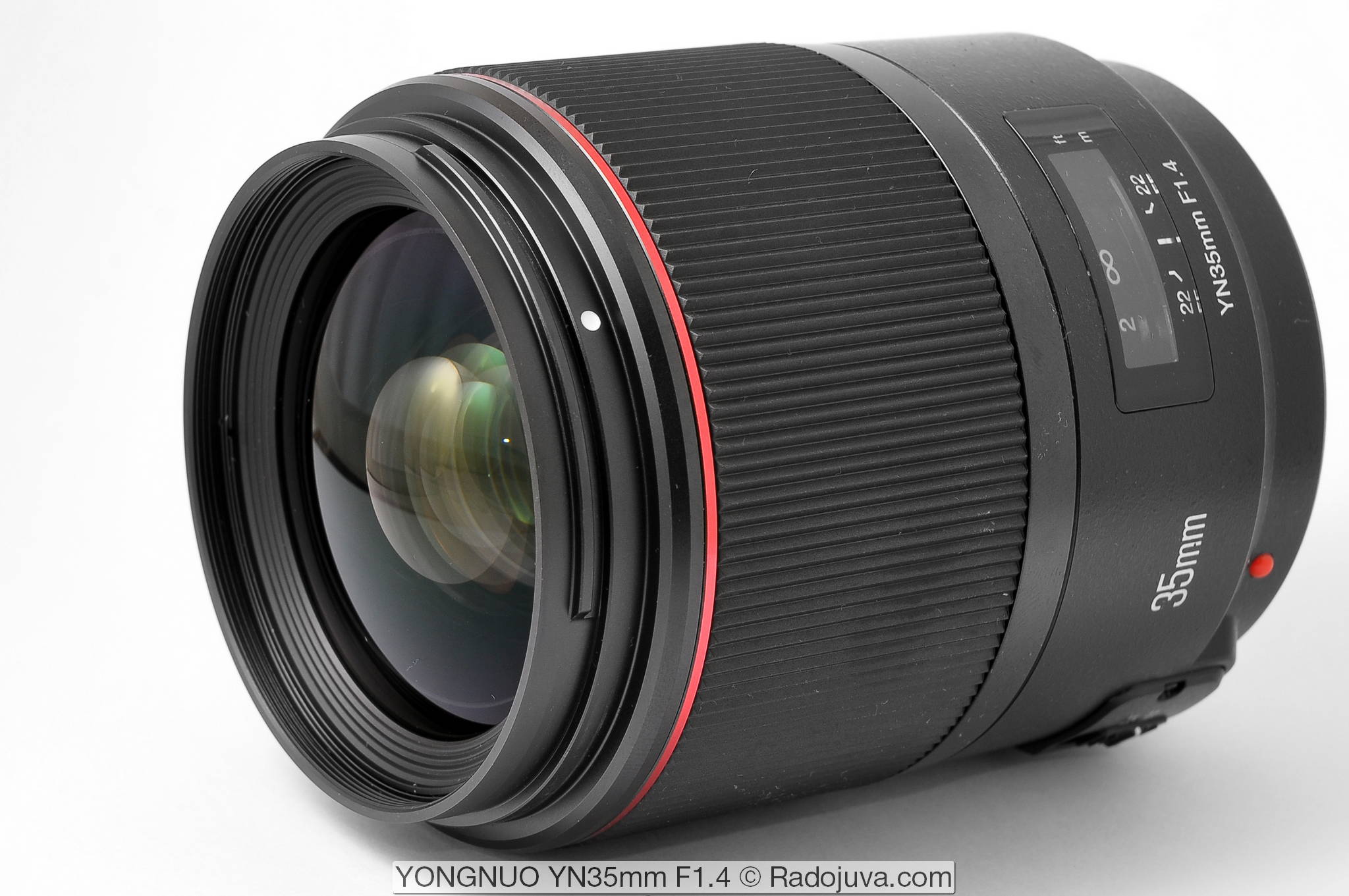
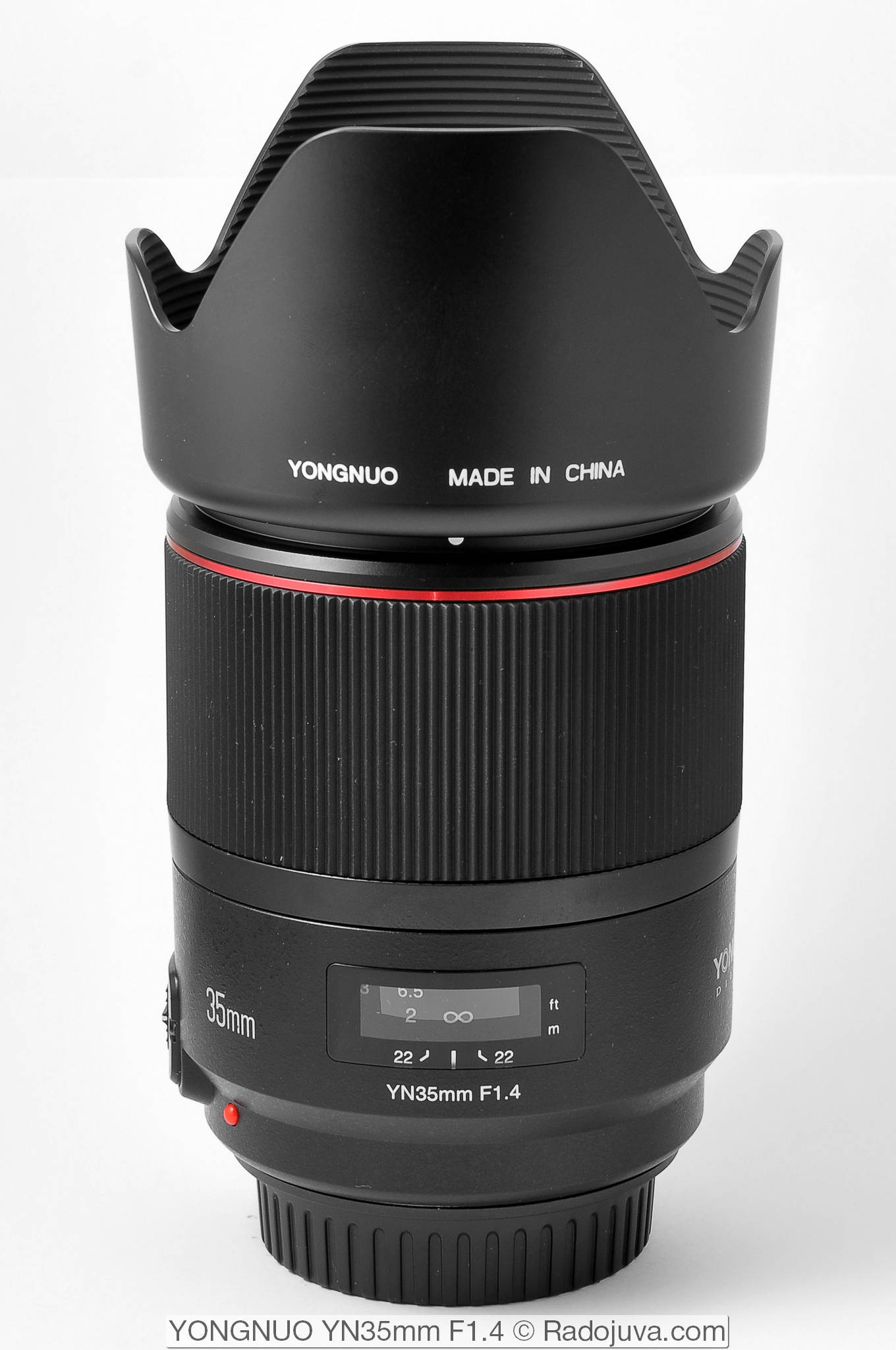
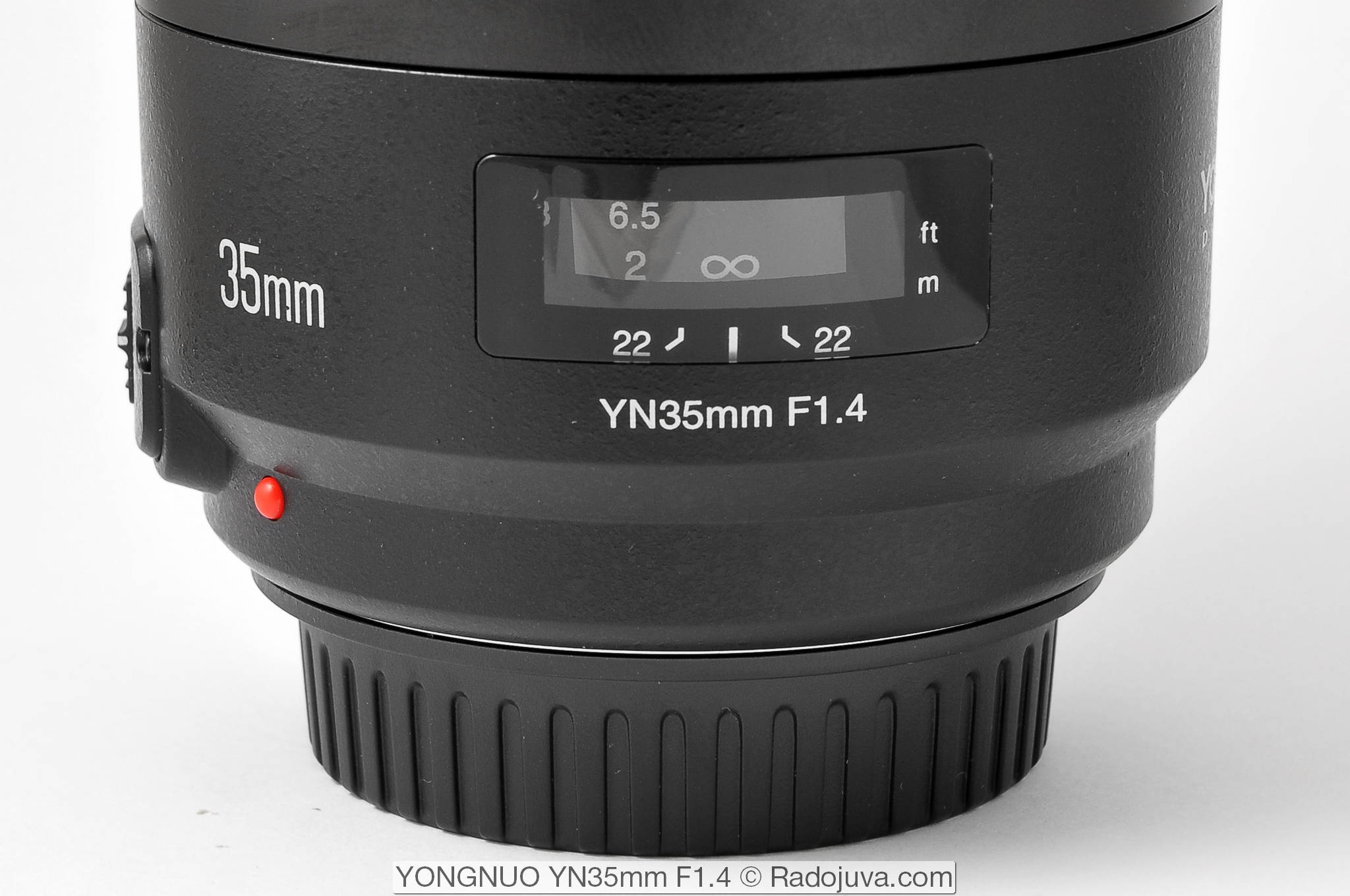
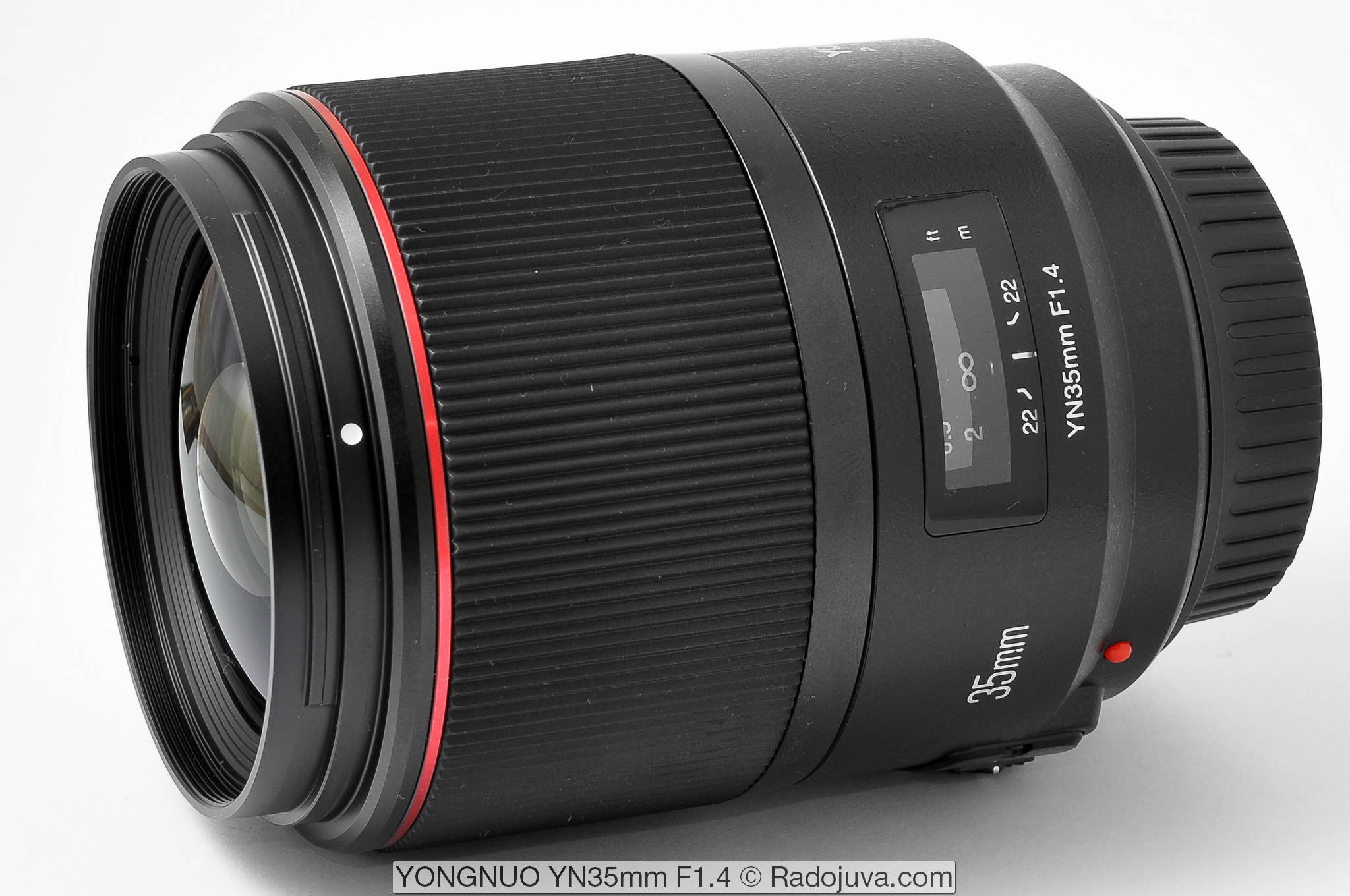
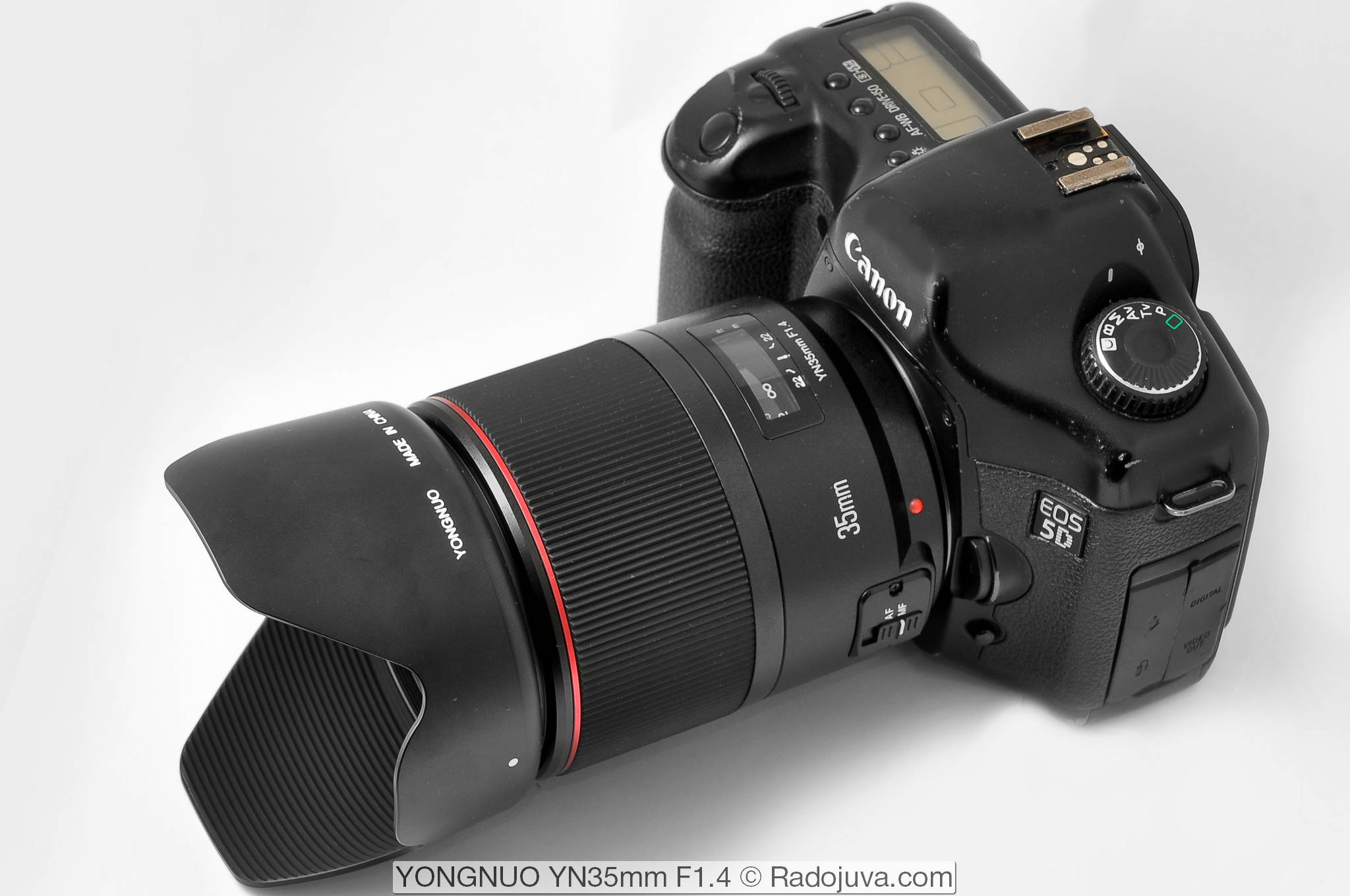
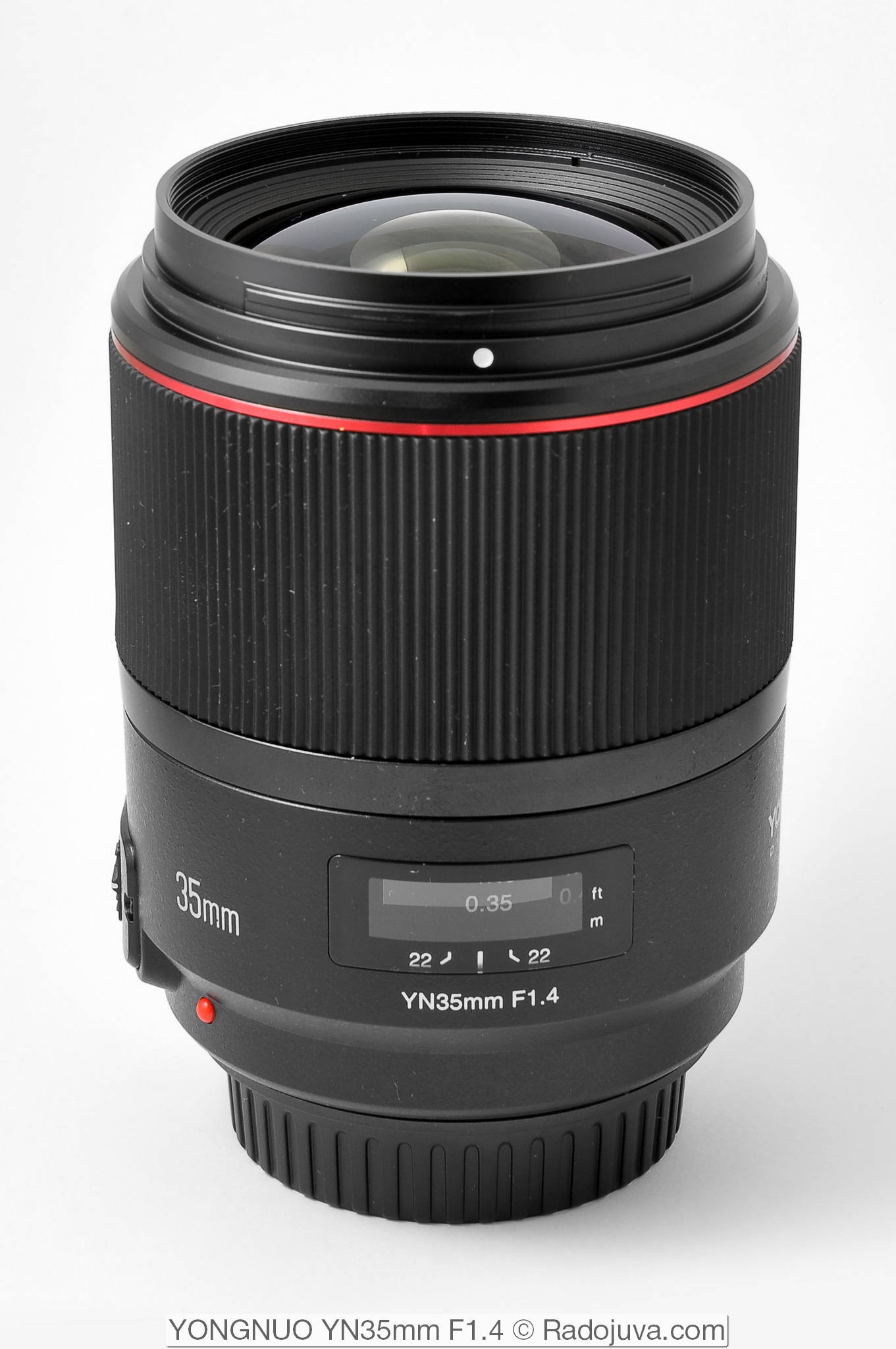
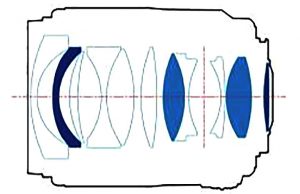
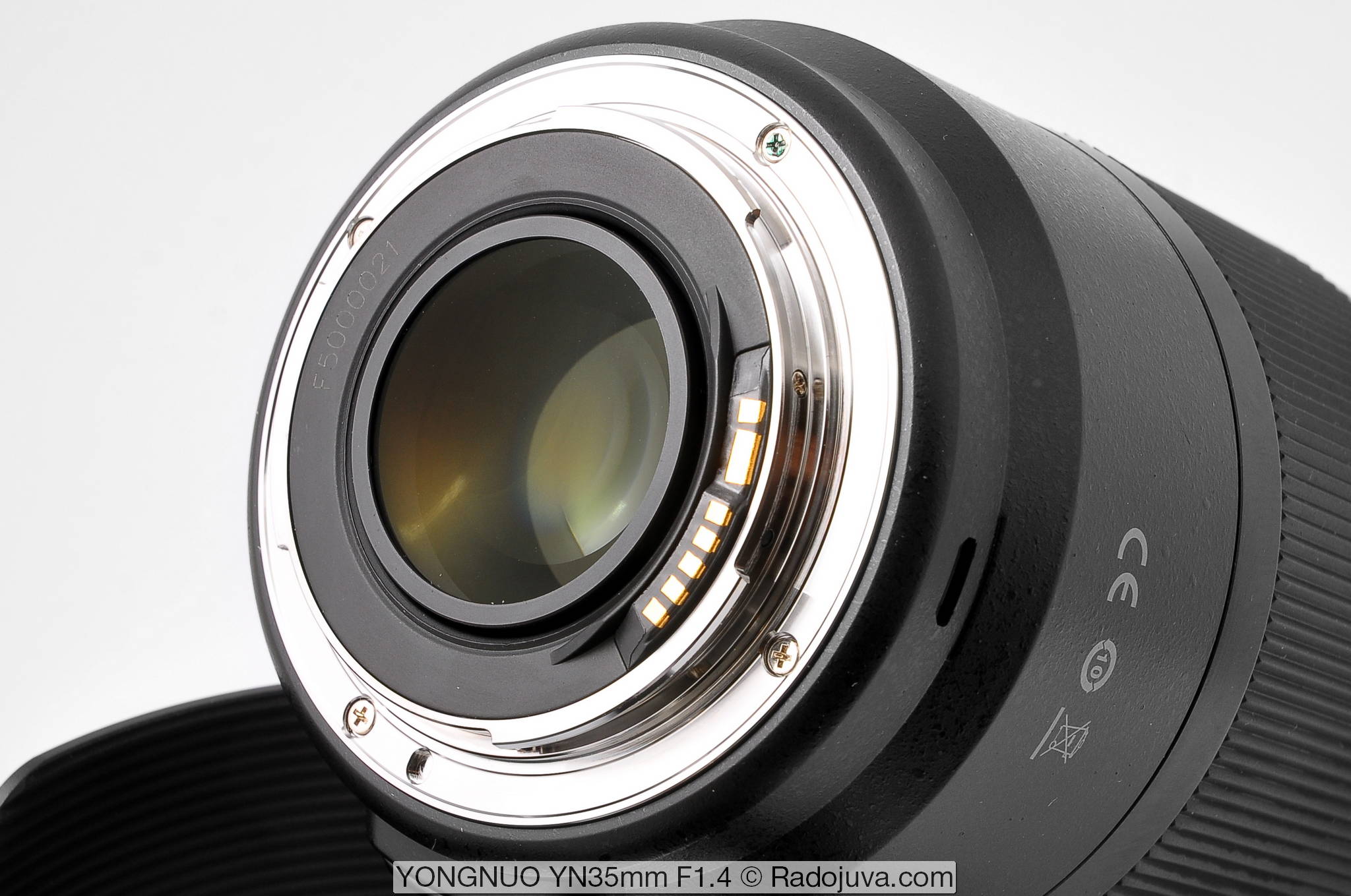
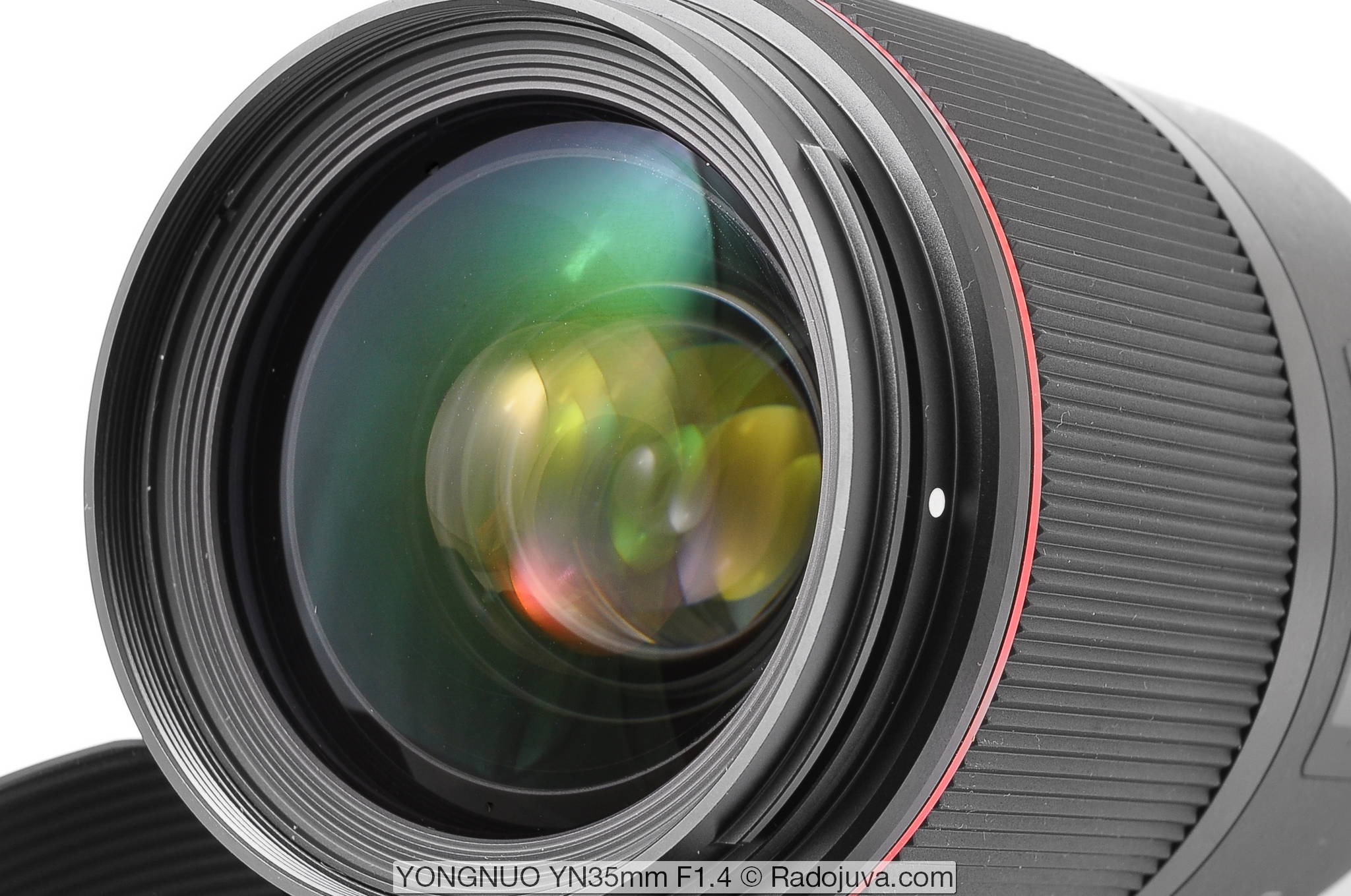
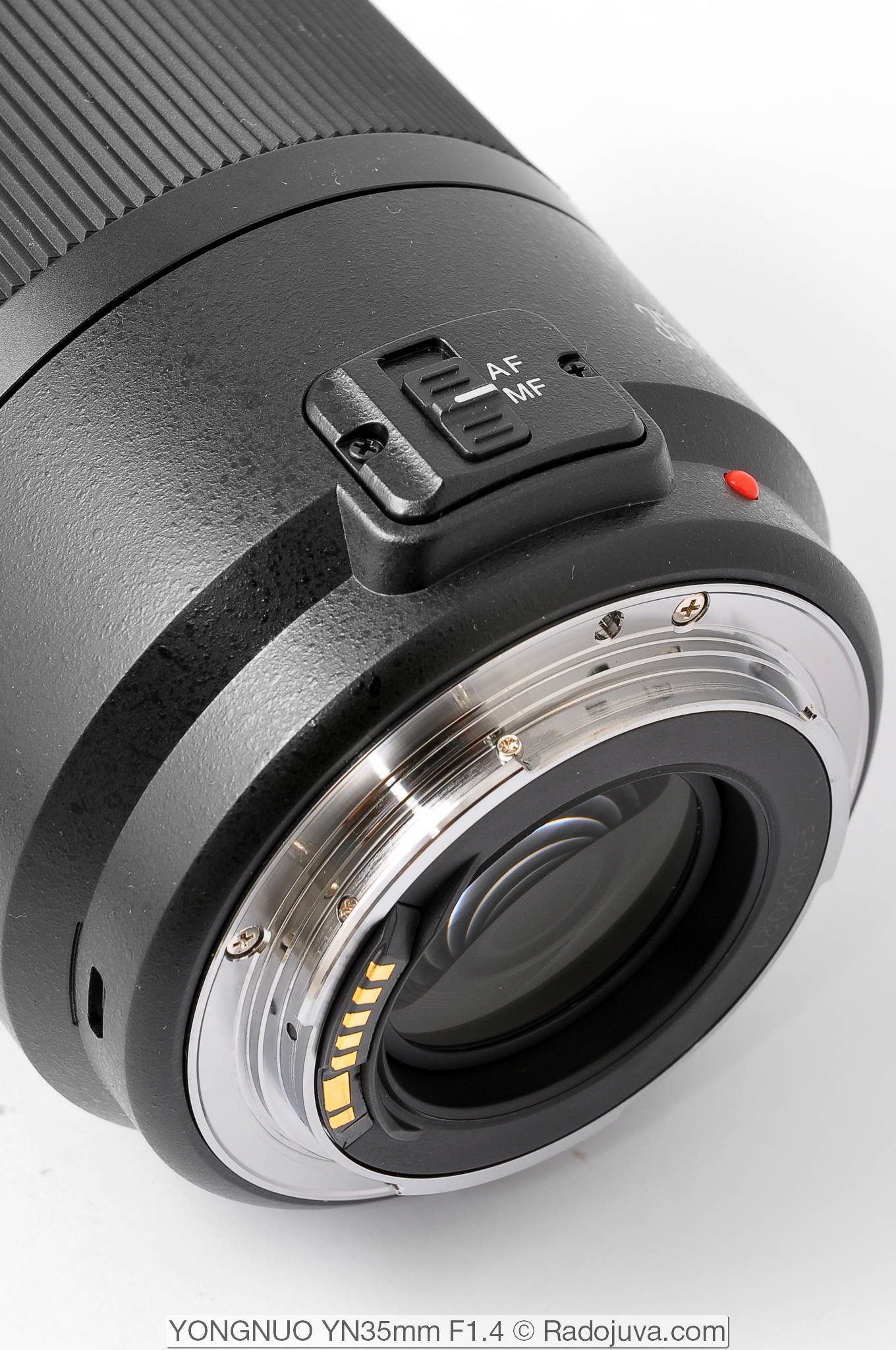
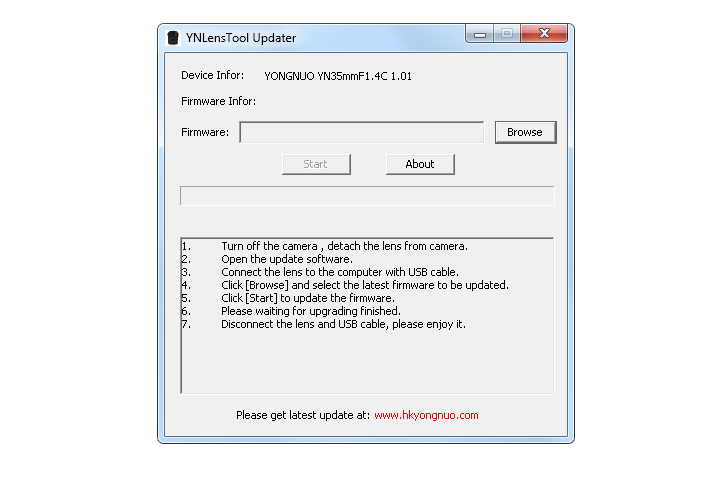
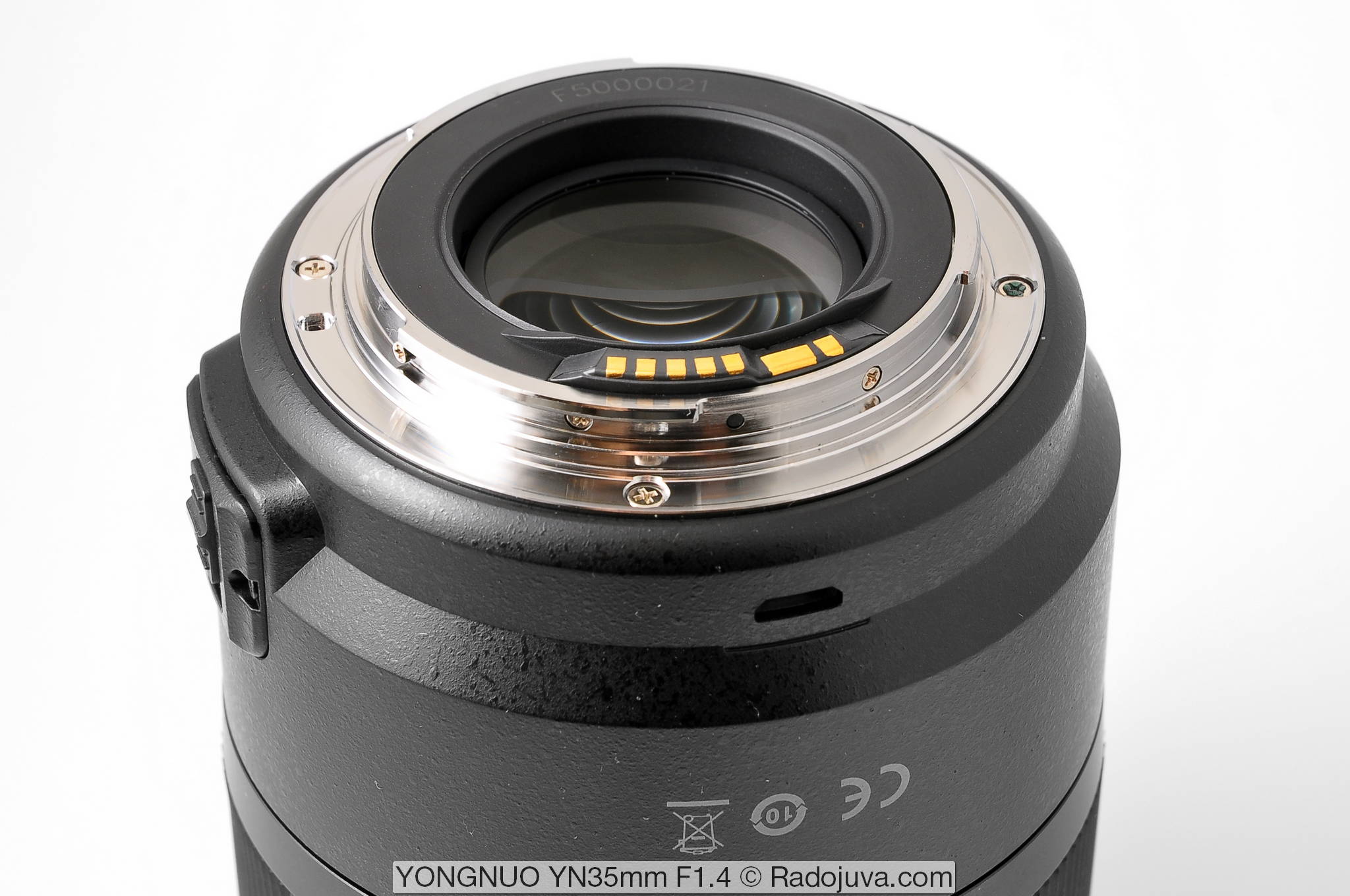
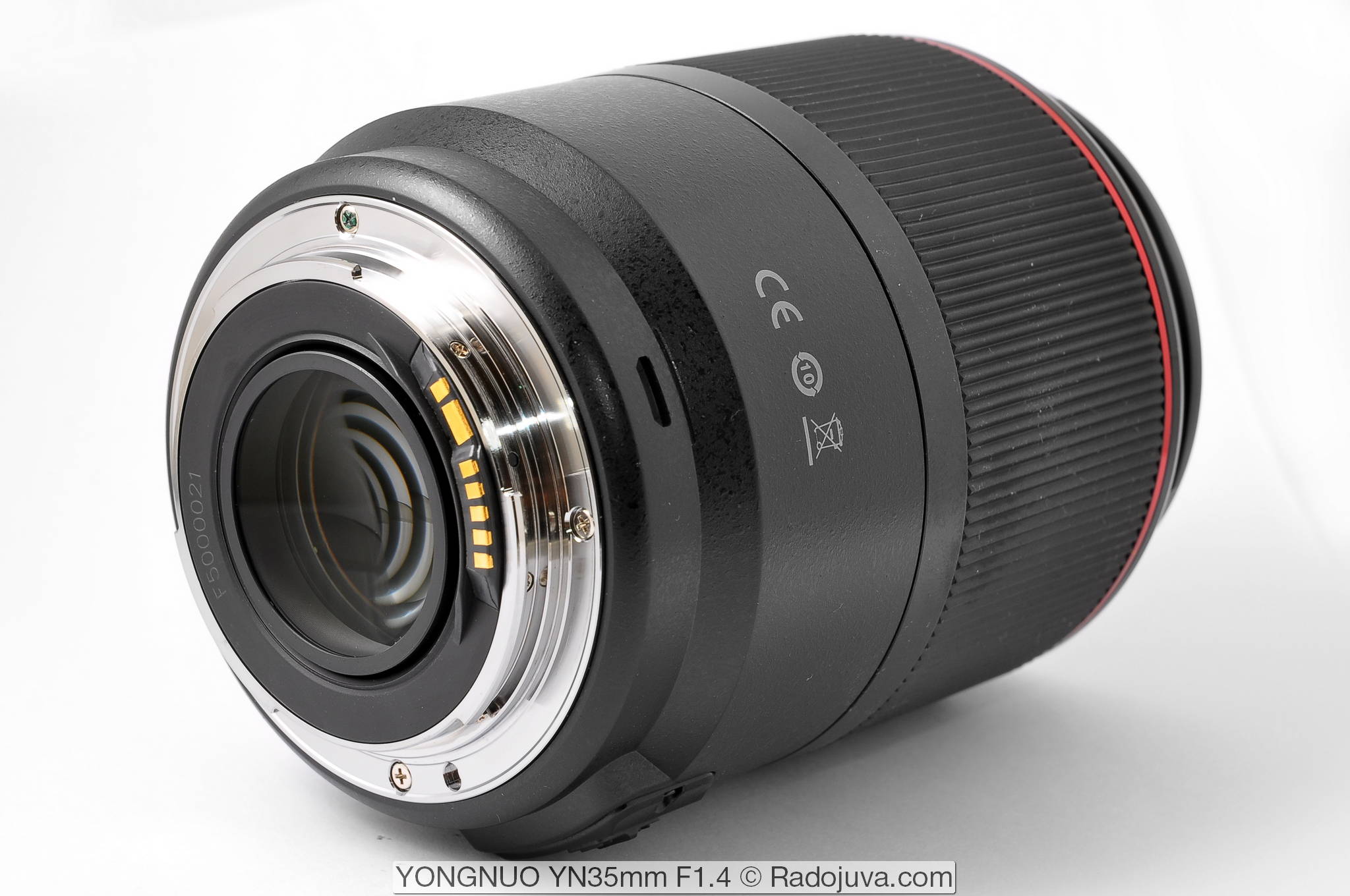
































































































































































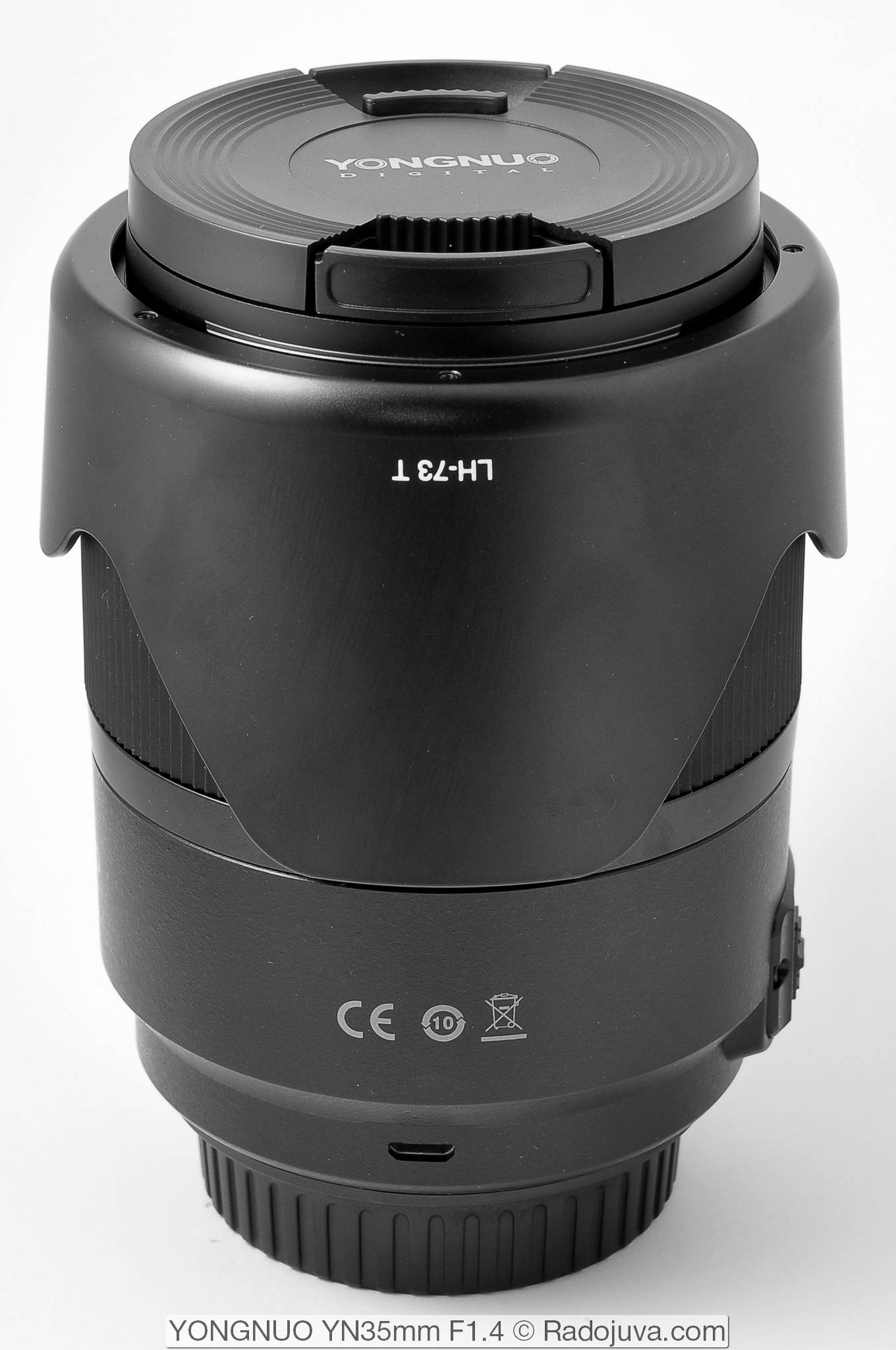

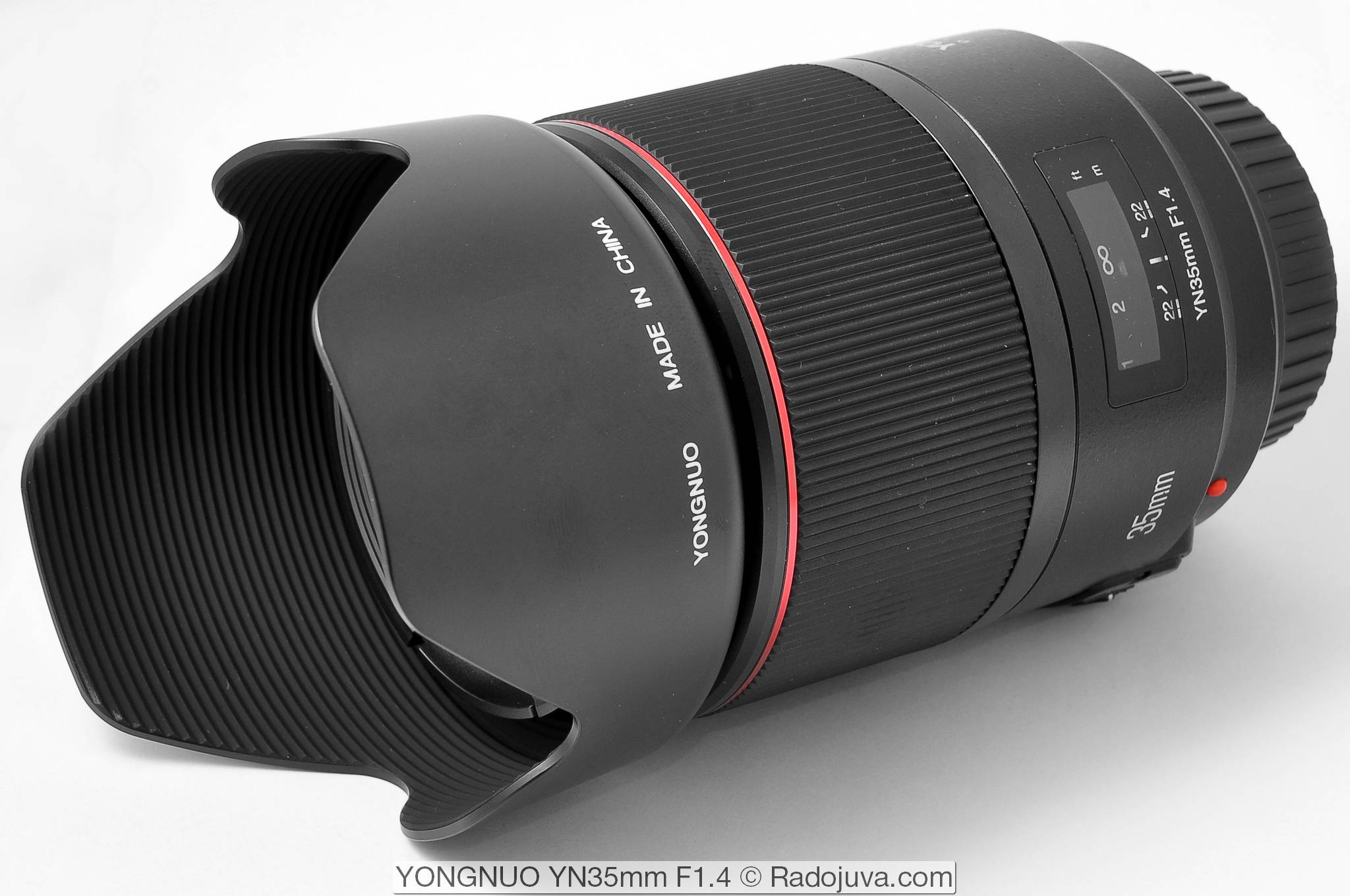
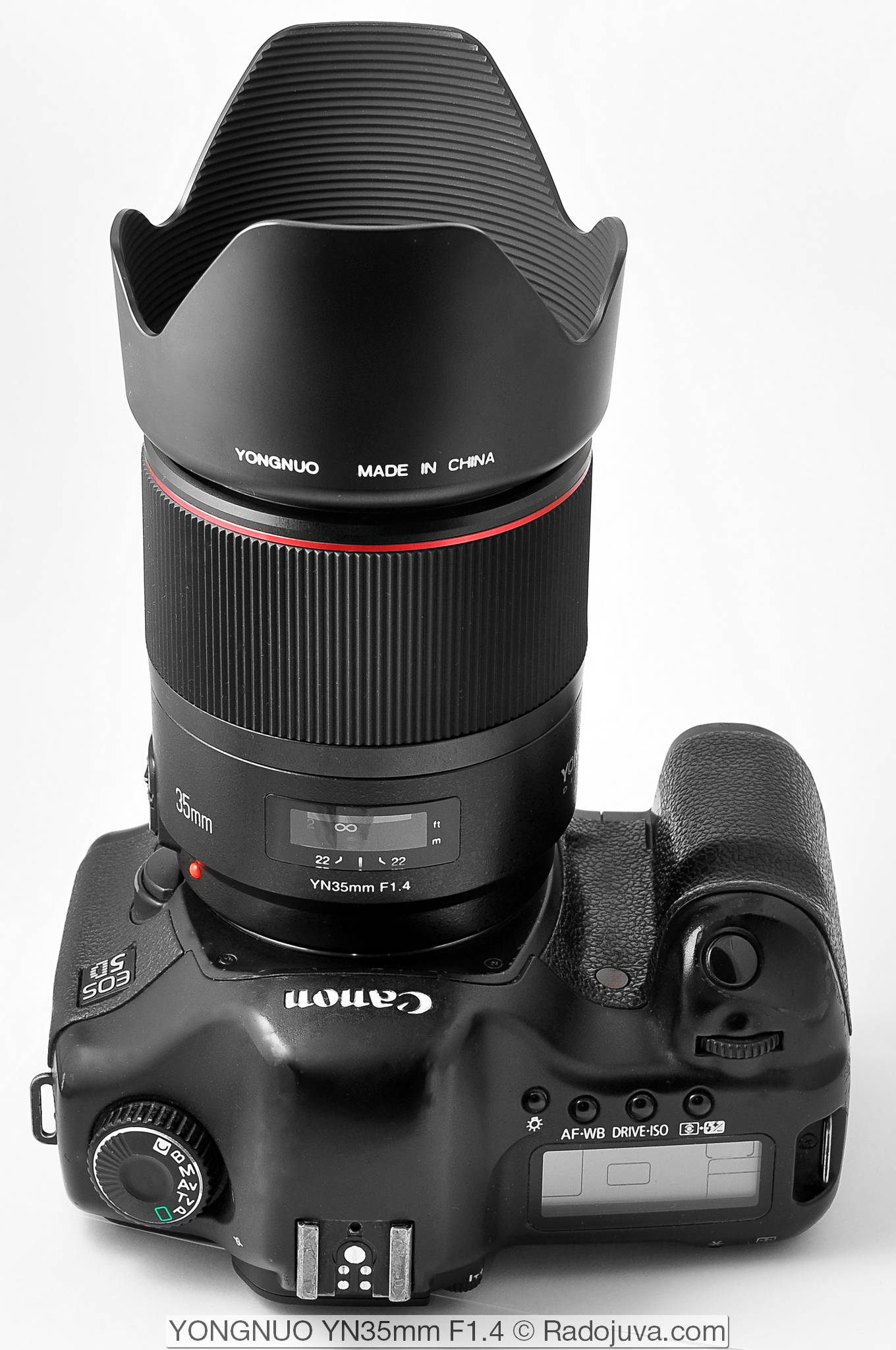

Very pleased with the novelty! Arkady, is there any 35 1.4 from this manufacturer with other mounts? Interested in mirrorless A7
So far, this model is only available in the version for Canon SLR cameras with an EF / EFS mount.
Most likely in the future there will be a version for Nikon cameras with Nikon F mount.
On the A7, you can use the Canon EF-Sony E adapter, for example such.
By the way, dear Arkady, after these excellent photos with this lens you became popular in China ... I think, guess what I mean ...
I really have no idea. The company asked me to send them some pictures and the right to use them, but I never saw the material that was sent anywhere. Here in the review, by the way, a little is shown, given the entire volume of photographs that was shot at 35 / 1.4.
I saw it very simply - it is impossible to pass them now here, I am not exaggerating, they hang with your name and even with the indication of your Canon 5D right in the most conspicuous place, in fact it will probably be seen by about a million photographers here, and amateurs too. Here is a link for you -
https://detail.tmall.com/item.htm?spm=a230r.1.14.6.6b1364fbN5zd7O&id=580707582030&cm_id=140105335569ed55e27b&abbucket=3&skuId=4040393883253
This is the official page of the company on tmall, the top intra-Chinese online store of Alibaba, all Chinese people buy almost everything there and scroll there, and there are essentially no other official online stores, there is simply no need within China.
Thanks for the link. I sent them many portraits, which are not here in the review, from other shootings, but only those that were in the review took :)
It's my pleasure. They chose them on the basis of showing how the lens works on closed apertures, making rays, and also because the foreign photographer is successfully using their new product. So it should be when the ads are doing.
Great review, thanks! I even became interested to see what this 36 megapixel Sony A7R lens will show.
Tell me, in your opinion, when comparing this lens with Sigma 30 / 1.4 for crop, which will be better?
Sigma will be better, especially 30 1.4 Art
happy with how fast Yongnuo's new products are coming out
Thanks for the review! That's the lens! I downloaded and looked at the photos in full quality. However ... Above all praise for such a price. I must say right away that I rarely use wide-angle super fast lenses and maybe I didn’t notice or understand something. All in all a great review of the great NEW lens. Surely for many it was useful and guidance in choosing a purchase.
Well, the lens is not great, but deserves attention.
Of course, the pros know better! But the price-quality for the new product is good. Another important thing is that the design did not disappoint. What the lens looks like is also important.
Dollars 100-150 are definitely superfluous ...
Honestly, with such a price ($ 450), I would rather consider a used 35 mm f / 2 (f / 1.8 for Nikon) than look at these Chinese 1.4.
Why 450? After all, now he is 350
At the time of writing this comment, the price "from a trusted seller" was 450. Even at a price of 360, for me personally, this does not really change anything.
The link to the “verified seller” was $ 450 yesterday. $ 360 today.
This is strange when I added the link the other day, there were 360, yesterday too.
“… Sigma 35 / 1.4 ART will be better than Yongnuo 35 / 1.4. But personally, I would stick with Yongnuo 35 / 1.4 due to the low cost and not much worse picture "- the difference in picture quality is exactly the same as in the price. Approximately twice.
They started selling the lens only yesterday, and experts already know everything and know how to accurately determine the difference in quality. Fantasy!
What is there to define something? - His picture is at the level of both Flektogons 35 mm. Only a little worse.
All clear. Elektogon here does not smell. Still old Distagonov stuck here
It's good that it's understandable. Flektogon 35 \ 2.4 in excellent condition costs the same as this Chinese. And by the way, without autofocus, and without 1.4. Because the result is better. The market knows the price of everything ... 35 \ 2.8 gives a picture comparable to the Chinese level, but with the best color.
I would like to know how you determine that the picture is better / worse. With examples, if you can of course.
With regard to all the Yongnuo that figured here, we can talk about two generic defects: weak undertones and "plastic" color. This is already enough to define "better / worse". And to indulge oneself with illusions like "not much worse, but how much cheaper" - well, it's the master's business ...
I will allow myself a little joke: we are waiting for you from black and white photographs of water lilies on Zeissovskie 35 / 2,4, 35 / 2,0 and 35 / 1,4
And if not to joke, then the old 35 / 2,4 due to the lower contrast can in some cases give a softer picture, including a softer one in color. But this does not mean that he will be better. Also, about the prices for it, on e-bay they sell it on average for 200-250 dollars.
What does the picture mean 2 times worse? It happens and 3,5 times worse or what?
It happens at ten ...
Very good overview. 1.4 for this price is just a godsend! Yes, not as soft picture as Sigma or Canon, but PRICE !!!
Arkady, excellent review and beautiful photos (and cats! Many cats !!!)
Although my lady to photograph with a birch growing out of my head ... well, you understand.
In general, the Ketays are great. They invade the market very aggressively, crowding out eminent competitors. This lens is quite good, even when open; and on the F4 it is so gorgeous at all (although, there is more merit of the photographer). The faceless Sigma-Arts retire to a corner to smoke. I am glad that there are manufacturers who make lenses that do not keep up with fashion (only sharpness! No micro contrast!)
Thanks for the review, may the Force be with you!
I agree! Only sharpness, no micro-contrast, no skin.
One sharpness to indecency. Disgrace! In the furnace, such glasses, pah on them again!
Not like the mid-90s / early XNUMXs Sigma. You used to go on a hike to Avito, scoop up a bunch of dusty sigma from these years. And lo and behold - everyone gives a different skin tone. Some of the European were repainted into a yellow-faced Chinese, some into a Markovich-type vegetable, and the best varieties would repaint their faces in almond color. And you don't have to sit in editors - almonds are the most) [/ irony]
That photo was conceived and selected by the model on purpose. Due to the completely different perception of the pictures, what the photographers do not like can be very much liked by other filming participants or outside viewers. The agreement was that for the review I would choose 10 photos without processing. Of the 800 frames, these 10 were chosen for me. Well, of course, this is by no means an excuse, I just clarify the essence of the situation.
I, it seems, did not write anything about the "average" prices for 35 \ 2.4. It was about the price as “as new”. And it is the same as on YN 35 \ 1.4.
No, your speech was “in excellent condition”, and this is far from “like new”.
In any case, the “average price” was not exactly discussed.
The blow at kmz))) the Chinese brothers took and were able, the weight is approximately comparable to their wonders, but it turned out much better !!!
Well, still: KMP and labor are more expensive, and there are no licenses purchased, and the cost of production on the ruins is more expensive. Yes, and they do not have 35 / 1.4 for DSLRs)
KMZ will give birth for such a long time and, most likely, will never give birth.
someone would need to clean the matrix)))
It is interesting how this model behaves on multi-pixel carcasses.
Hello Arkady,
Need some advice. There is a Nikon D5200 with 18-140 / F3.5-5.6 and 35 / F1,8 lenses; I can buy the D7100 at a good price or the new Sigma 18-55 / F2.8 lens.
What would a professional give preference to?
If you take Sigma, then 17-50 / 2.8 OS or 18-35 / 1.8 ART. Everyone decides for himself. I would prefer the d7100 for ease of use, and some lenses are already available.
As I came to the store, choose my own acoustics. The seller offered to listen to the Chinese brand and markdown heco. When I listened to the same compositions, first on one set, and then on the second, I did not hear the difference. But, when the kits began to change after 15 seconds, I realized that the Chinese speakers are bad in comparison. For lack of opportunity to compare it is the best.
What am I doing? In the review there is a comparison of only prices, but it is not clear how lenses will be removed in equal cases. It is not clear whether this lens of the same yn 35 f2 is worse or better or there is no difference.
The appearance of such lenses aimed at the middle price range and stuffed with high-quality glass inside was expected over the past few years, of course, Chinese companies do not stand still, if you come there, you will see that foreign engineers have been invited for a long time, sometimes dozens from different countries, including Russia and the countries of the former USSR, and they are developing new products. China has mastered the production of high-quality optical glass and, according to unspecified data, the export of this glass is increasing at a very rapid pace, and, I will surprise you, having named the country of origin of this glass - Japan. Now several factories for grinding large lenses are being set up, and foreign and highly qualified specialists are also doing this. In 5-10 years, we will surely see a whole gamut of new lenses in all price ranges. I think it is good. This lens follows the market, Sigma philosophy, which puts the resolution of lenses in the first place. And rightly so, differently Sigma and even Iongnuo should immediately produce lenses similar to Zeiss, but no one will buy them, and they will cost significantly more, I almost never saw that top-end and wonderful lenses under the Zeiss or Fochtlander brands are used by amateurs and even most of the professionals. So the company made this lens as sharp and contrasting as possible, and the optical scheme in the field is possible that it was calculated. China has huge computing power, the cost of using them for smart calculations is the smallest in the world, and calculating a fixed lens is not so difficult. In China, the lens costs exactly $ 299, local photographers will definitely support their own company, in China this is the norm, and there are more than 3,5 million photographers here just registered in the association ... I am also almost sure that in the near future we will see Chinese lenses with ultrasonic motors. Of course, Kenon and Nikon will never open the specifications of their mounts to third-party manufacturers (which is why many Chinese and non-Chinese companies now produce lenses primarily for Sony and Fuji), otherwise they will really lose a lot. a part of the market, they have everything set up, lenses have long been produced with weak points embedded in them in advance so that they fail “on time”, people are hooked on original lenses, they change electronics so that third-party lenses always work badly in new cameras (exception - Tamron , he has licenses from Nikon, and they sometimes own joint patents for lenses, and sometimes Tamron makes lenses for Nikon, and for other manufacturers, which is only top-end lenses of the Milvus series designed by Tamron for the new Zeiss line) ... I repeat - judging by the pictures, this lens is not that bad, but we can combine it even quite good, or very good, or just a good lens for the cheapest price on the market. Personally, I don’t know why everyone is crazy about 35mm fixes. Last year, personally, I was at home with that top one from Kenon for several months, but after several days of use I put it back in the case, but this is my personal opinion. Maybe it’s very useful for the reporters.
Thanks for the detailed comment. Everything develops by leaps and bounds.
Nikon's marketing director once said recently that Nikon doesn’t give his AF algorithms to anyone. Literally no one, no license.
Thanks for the review, Arkady! But still the old man 5D gives out a wonderful color!
I must say that Yngnuo is progressing noticeably - by flash it has already caught up with the originals from Canon, in optics - after another 5 years, it will be no worse than stamping old Elecs.
mmm, Arkady, your photos are already in the yangi store. Cool!
Arkady, yak schodo a photo on the іnshy kenon by autofocus - is everything so "no worse"? more according to vlasnoy dosvid memory, but 5D is weak in the whole sense ...
750d is a little better, but there are mistakes too, in general you can live
A month ago, I changed my Canon 5D mark II to 6D (Mark I). I want to say that it’s not that he was pleasantly surprised, but incredibly pleasantly surprised how much he focuses faster, besides in much darker conditions and without the expected mistakes (he made conclusions for the AF center point). I'd love to feel this lens now after your review)
Andrey, you are absolutely right.
AF on 5d Mark 2 is the impression that he constantly plays roulette, he has no time to focus))).
6D is better, noticeably better but far from desired.
Nevertheless, I sold 6D and bought back 5dII, they are very different in color not in favor of the 6d / 5dIII matrix.
Arkady, why in the review is not described, in the pictures, that the object in focus looks like an application?
If you perceive this, you can describe your observation in detail here in the comments. I don't think so, because this effect is not described by me in the review.
But this is an interesting observation. The “cut out” DOF zone is the first sign of a soap dish. Since in this case it was filmed on 5D, there is no question of a soap box. So the “soap dish effect” (at least for some observers) is on YN's conscience.
Where did you see this?
It seems crime is nowhere to be found.
Note that you are looking at pictures from 5d. This camera itself has good, sometimes good color, but very, very low dynamic range. Low DD paired with a sharp and contrasting picture in some situations can create a hard / dry / woody picture. Basically, I choose plots so that low dd is not a problem. Someone can call such a picture “application”, someone else somehow. If it was filmed on some kind of camera with 14 stops of dd, the picture would be perceived differently. Therefore, I am very careful about the issue of color and all sorts of artistic problems, they are often very subjective.
How many stops do you define the DD 5D Classic? - This is the question of "very, very low."
I am not dxomark to say numerical value. But to the touch in converters the dd of 5D is lower than dd of any Nikon crop on CMOS, and after any modern Sony or Nikon, the dd of 5D simply does not. With 5d, you need to carefully monitor the uniform lighting in the frame, its tonal transitions. Even in greenhouse studio conditions 5d lasts worse than my old d90. When developing a rav with 5d, it poorly restores light and draws shadows poorly. Today I shot another 2000 shots of him in the studio and once again I am tormented between his good color and his weak dd and weak focus
If we are talking about "to the touch", then quite competent people by touch define the DD 5D as visually no different from the 5DMII, which is estimated at almost 12 stops. A more rigorous estimate looks like “roughly 10 stops” https://www.provideocoalition.com/canon_5d_how_much_dynamic_range_does_it_have_really/ But that's not the point. In my opinion, you are in vain trying to write off some features of the image with YN on 5D. With the right 35mm lenses, the 5D works without any dryness or woodiness.
Black and white stripes are very distantly related to shooting in a real three-dimensional color world.
Of course, such tests have their own application, but for specific and narrow tasks.
In our case, these are nothing more than spherical horses in a vacuum.
5d mark 2 also on dd is not the most pleasant, but still mark 2 is much more flexible in this regard
No offense, but 5D has no dd. But, of course, this does not mean that the 5d is a bad camera, I personally appreciate its capabilities. First-timer users - unsubscribe :)
As for the lens, don't think that I'm shielding YN - I, by and large, don't care. Here I explain more about the transfer of the image, and the fact that pictures from modern cameras at dd in 14 steps, and even with some kind of built-in software dd expander like Nikon ADL, Sony DR / DRO will be different, noticeably different.
I wrote that I had been using 5D3 for a long time and then he was lying around at home for almost a year since I didn’t even want to look at him, he ruined all the shots because of his paggy dd, as well as an extraordinary bandit in processing, both in the light and in the shadows. The files from my Pentax k-01 are heading higher, and when I tried Nikon D3s, I returned it to my Chinese friend (he gave it to me to use), and now it is gathering dust with him, since he bought a Nikon D850b which, by the way, is superior in color any camera, and Kenon and everyone else. In it, as well as, as I suspect in the D500 and D7500, Nikon by default uses some kind of new profile, probably expanded, and in conjunction with new powerful processors give excellent results. So his new mirrorless ones give out exactly the same colors and, despite their slight cutbacks, testers have already broken out on the first positions on the sites and everyone notes unusually good colors.
Wept. "It's like this, I ruined all the frames ..."))
Koba posts can just be read to cheer up)
And yes, Koba! Well, what is it, how much is already possible! Tamron was not made by Milvus, but by Batis. Batis, Koba! Mom mia ...))
For some reason I remembered milvus, I apologize ... But what's the difference, the main thing is that Tamron is a very good company, in fact, it can do very high-quality things ... Posts? Yes, how many pleases just where? I will collect several RAWs and send the link the other day, now just far from my computer where the archive is stored. Yes, you don't have to go far, there is a defective matrix, it spoils all the frames, if there is at least some contrast in them, and the noises start from iso800, these paid sites are disgusting about this camera, he shot the video well, not a photo, of course , in the studio where it was not required to pull the shadow by the way, you may know that it has a priority mode for highlights, in this mode you cannot lower the ISO below 100b and without this mode, goodbye to the clouds and light parts of the picture, its dd is lower than that of phones ... By the way, the files from 6D are much better than from 5D3 ... I will also specially collect the files that I shot on a really good 16-35 / 2.8ii lens, and not on the ridiculous 24-105.4 L (L was added there so that people would believe that it was of high quality. even the retainer was forgotten in the L-series lens so that the trunk does not lie constantly). Also, the camera itself has its advantages - first of all, it still needs to find such a viewfinder, as well as ergonomics (Nikon can't make the handle a little bigger!), But the intervalometer for him was an unacceptable luxury, and the vaunted autofocus even with a lens of 2,8 , 7100 can't catch focus in any dim light (where Nikon D5 easily focuses). Of course, the so-called. Kenon engineers corrected everything I said in 4d2017 - and the banding was removed and the intervalometer was able to turn on (in 7100!), and the autofocus sensitivity was boosted to the level of Nikon D28, but of course the full-frame video was removed so that there was something to dream about ... And I took it with a friend for several months, I thought that now I would test that legendary camera in action. I can also say that the healthy Canon 300-3 L lens (and it really is L) turned out to be better than I expected, I think it is the best superzoom on the market. And finally - the camera was very sensitive to dust, almost unprotected, every XNUMX months I had to clean the matrix and this is in a region where dust is like such a netb and I never used it in any extreme conditions.
I shot and processed mark 5 on 3d in a variety of conditions, I was also surprised by the low dd, not the most tenacious af (though, I worked with the first 24-105 / 4). The camera itself seems to be nothing, but if you compare and dig deeper, then questions arise.
Dear Peter Sh., I would not say anything bad about 5D3, even despite the small dd (this is nothing) if it were not for the awful banding, but of course I brought to mind all those photos that I will publish in two books, maybe next year , but how much I tormented myself in Photoshop to remove literally every time this banding is still those memories. Moreover, the resolution of the matrix itself is high ...
Yes, Koba, I agree with you. I also had to shoot on 5D in the studio and was also quite surprised by all of his oddities. I had to reject hours of work because of the inability to simply bring the shadows into an acceptable form.
As for Tamron, I also agree. I like his color rendition much more than Nikon. And it’s a pity that I can’t work with him because of unstable AF in difficult conditions. But this is with me, so few people are shooting.
So today I specially took a new 5D4 and shot a few frames there and viewed it in the converter. The banding was fixed in it, it almost does not pop up, the picture is cleaner, autofocus works the same way, normally, but it focuses in the dark really confidently, where 5d3 refused to focus at all, the beginner does not even notice the darkness. And they added an intervalometer, for me they turned it into a really good tool for photographers, otherwise the 3rd version was essentially a video camera, and a good one with Magic Lantern, as its users said. This is how I discouraged my acquaintances from buying 5d3, now I urge to buy 5D4. High ISO and deep drawing of shadows are still not for Kenon, although the novelty behaves much better in this matter. As for the first 5D - I did not shoot with it, they just gave it to me a few years ago for one day and shot something, but the impressions remained very good, I was even surprised by the quality of the photographs obtained, the detail and some kind of vivid, pleasant colors. it clearly exceeded my expectations, and now I think it will be an ideal purchase for those who want to use old lenses through adapters, and in terms of uveta and better than its next versions. Yes, what can we talk about in general - in China, for example, it can still be found almost in a new condition for only 250-300 dollars, while for a 5D2 in the same condition you will have to pay 700 dollars ...
2 Peter S. So I - about the same. There is no need to write off specific shortcomings of specific optics on horseback in a vacuum. Moreover, with DD 5D, not everything is so simple.
There are haters of Nikon, Kenon, Sony, Tamron, Sigma. hare, lyki, etc. There is now an official yongi hater. It's like with a dormouse - the color is bad and noisy, nikon turns green, kenon turns yellow, and now yonga is “for rogue” ... oh, or is it about pentax. And then here the man will break his forehead, but he will prove that the yong for a pitiful 300 bachey does not give a noble picture of zeiss and will prove that the finished first 5d brand has a good q q, he will be able to tell everything and suck anything, just to enlighten stupid rams that yongs are junk, he himself is dartanyan and the tester does not understand anything. Arkady has no tables and the world, but he painted the yong well and is surprised how a person can agree to shoot at 700d after d800, d3, mark 1, k2-9, a5 and other adequate cameras. Either psycho or knows something
At our place of work, a woman drove a Chinese car, claiming that it was a copy of a Toyota (and named the model), and so not a single detail there matches, right down to the towing hook. the engines have their own version of Mitsubishi ...
the main thing is to believe that Yongnuo is the same Nikon / Canon, only cheaper
Incidentally, I have a tricky counter question. For example, if on Nikon AF-S 105 / 1.4 Is there an inscription MADE IN CHINA, is it Nikon or some kind of Chinese consumer goods?
of course nikon
if Toyota is released at a factory in Ukraine, it will not become a ZAZ car from this
How it will become! unskilled workers will contribute to reliability
What about company control? Take Uz-Daewoo or St. Petersburg stamps.
By the way, all modern lenses, regardless of brand and country of manufacture, have one very important nuance.
All electronics in them are soldered according to the ROHS standard.
The solder of this standard has the property of crystallizing and growing spikes that close adjacent contacts. In this case, the lens turns into a bunch of useless junk.
It is not known how long it takes, maybe 10 years, maybe more, or maybe less.
Like this))
It's hard to believe in such a nuance without proofs. Still, only pure tin (an obvious lead-free solder) is characterized by "tin plague" - a phase transition, accompanied by the loss of metallic and mechanical properties with a strong increase in volume. Therefore, no one solders with tin, but more complex alloys are used. Although, adding only 0.3% bismuth or copper already makes tin stable - Sn 99.7 solder can be bought everywhere.
Rodion, the Internet is full of information on this issue, they themselves could work to find.
Here, for example, you can read, in English: http://hdpug.org/system/files/uploads/Activities/Tin%20Whisker%20Webinar%2010-29-2015/Snugovsky%20HDP%202015.pdf
ROHS, in my opinion, is everywhere, and something doesn’t fail the equipment in 10 years massively
so, individual problems were
Denis, well, you give. Did I say that this must happen all at once and everywhere with all lenses?
In addition, you have statistics on all the equipment, how often and for what reason does it fail?
There are several factors that influence this matter. Sometimes they grow very slowly, and sometimes they grow in less than a year.
If the electronics fail here and there, then this will not be noticeable.
Among other things, I am engaged in sound engineering. All sound equipment is very sensitive to such things. There, everything younger than 10 years old fails right and left on a regular basis. But everything ancient works almost flawlessly. And every sound engineer understands why. This is a common thing, as it were.
Well, the sound equipment is understandable - somewhere the parameters will change (analog), and you will already hear it. and in computers there is a number 0 or 1, in order for it to shut down, the parameters must float away
I'm not going to argue with the fact that when shooting with studio light for sale, the 5D can cause problems due to its DD. Can. Only one thing follows from this - it is better to shoot with other cameras with studio lighting for sale. For shooting street scenes with natural light, DD 5D is in most cases completely sufficient.
Here, by the way, is another psycho 5D. Or, as they say, knows something ... https://martinfrick-photographie.de/canon-5d-classic-die-perfekte-kamera-fuer-den-preisbewussten-profi/2355/ A pro with a bunch of serious clients who aren't bombing a living.
Niht, as they say, ferstein.
And in Manhattan the horizon mercilessly littered))
Which naturally does not matter.
I understand well all those who dislike Chinese optics.
Both my father and mother used to work as engineers at the Lytkarinsky Optical Glass Plant.
A high-quality fast lens was always something unusual and mysterious, almost possessing some kind of magical power. Like alchemy. And then all sorts of Chinese and Koreans turn it into cheap, rumbling consumer goods.
2 Peter Sh. A list of his clients can be found on the blog. He writes that there have never been any complaints about photos with 5D from them. There are also interesting comments.
I looked at the pictures again, I saw nothing of the kind
As for the application, this is, of course, an overkill, but the fact that it leaves the sharpness zone, let's say, in a jerk, is quite close to reality. Generally speaking, this is one of the hallmarks of a mediocre optics.
I have on prof. optics and technology so sometimes.
Even worse.
It's all about “sometimes”. And “sometimes” it most often depends on the layout of the plans in the picture. But "always" or "almost always" - this is the quality of the optics.
With all due respect, thank you for your reviews, but how many flowers / leaflets can I take already? What can these pictures show in general? As not a review, so 80% of the leaves. Shoot more people, I want to see examples of pictures with the real purpose of photographic equipment. Various portraits, large / very large / growth, on open diaphragms.
But it turns out that mostly open leaflets and fences, and the rest is all closed. What can a photographer understand from such photographs?
P.S. waiting for comparison with YN 35mm 2.0
Well - here there are portraits and pages and architecture and at different apertures and 200 photos in the archive. But even if you add 1000 examples here, there will still not be something :)
Usually I do not write a comment, silently take useful information. I visited your site more than once, but I couldn’t stand it anymore.
Also added one gallery in low light
I agree with the commentator above and add on my own - I would very much like to see
how the lens behaves when shooting at night. Not an astrophoto, of course, but something in
spirit: https://jellyjourneys.com/wp-content/uploads/2017/10/2017-06-20_post-img_4008_shoottokyo-street-photography-tokyo.jpg
Thanks for the review!
Arkady, good afternoon! I would like to know your opinion, as it was you who held this glass in your hands)
Now I have 24-70 f4, I took it on trips to Amsterdam and Bruges. And I caught myself thinking that I’m more often using not 24, but something around 30-32-35mm, but I’m approaching quite rarely. such narrow and poorly lit streets everything you need fits into the frame. But the aperture is not always enough, yet the difference between 1.4 and F4 is huge. Of course there is a stub in this version, and you can shoot at high ISO, but still, 1.4 is both boke and other nishtyaki)
Personally, according to your feelings, other things being equal, a similar fix at 35mm and at aperture of 4, taking into account the fact that it is Chinese and Yangnuo, is sharper or not than a zoom, but native - Canon?
I didn’t use 24-70 / 4, but I’m sure that this Chinese on f4 is sharper on his head. If you are looking for a similar one, then look at your native 35 / 1,8 with a stub or Tamron 35 / 1,8 with a stub
Well, questions here ... Even Yn35 / 2 will tear the native 24-70 which is f4 like a hot water bottle on the same f4. The Chinese will be covered by 2 steps!
May I give some advice on these lenses. I used this 24-70 / 4 month on 5D3 and its sharpness is exactly the same as from the old Keno 50 / 1.8b not even STM version. The new Canon 35 / 1.4ii in real life will be 2 times sharper, and it works very quickly, but it is too expensive. Slightly less sharpness, but at about 1,5, Canon 35 / 2is and Sigma 35 / 1.4 give more than this, as well as Tamron 35 / 1.8VC, Tamron also has high-quality lenses, the same as in the Milvus line from Zeissb so that it also provides high micro-contrast, especially in backlit conditions (like its gorgeous 45mm), and its stub performs better than any other. All fixies are just great at holding back light. Personally, I would recommend the Tamron (it is also weatherproof and mechanically made even better than the F2is canon), but if you need 1.4, then the Sigma 35 / 1.4. Here's another thing - I also used the original Zeiss 35/2, manual, in terms of sharpness it can be only slightly better than your zoom, in real life you won't even notice, but in terms of micro contrast and liveliness of the resulting picture, only the Tamron 35VC approaches that Zeiss. By the way, the most expensive Canon 35 / 1.4ii has a very large vignetting on the open one, the Simga 35 / 1.4 has less vignetting, the Canon 35 / 2is too, but the smallest one is again found in the Tamron 65vc, which also costs less than the others. ...
Tin, like 5d did well on ISO 1000 and above! I thought there can’t be removed above ISO 400
in terms of noise, 5d is not so bad, it is better than many crop from Canon around 2012-2013
UPDATE: added photos from the studio
Thank you, on the first penny, clumsy frames. Well, at least autofocus is sensible, and so the price of maxim is 200 bucks.
UPDATE: added pictures from 750D (crop), and also added more pictures to 5D.
Yeah, still at 1,4 with the DOF you need an ear vostro
Hi would you be able to test it for astrophotography please. Especially for coma level and the like. Cheers.
Arkady, the percentage of rejects on Kenon 750d is less than 5d?
Yes less